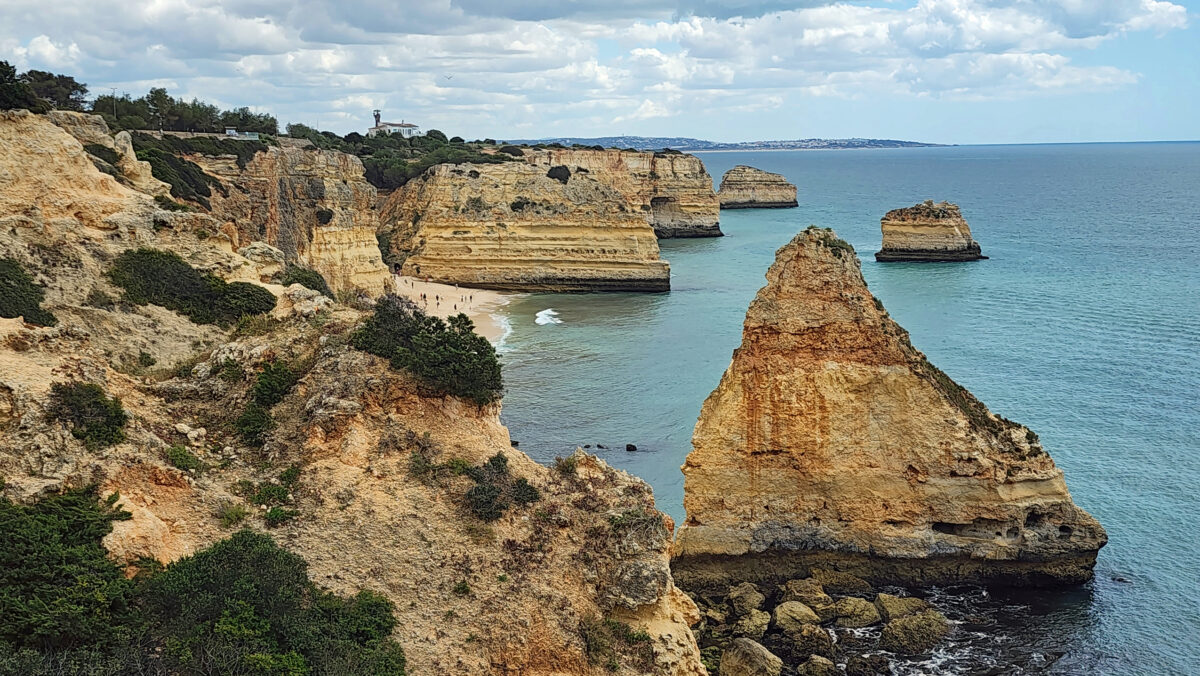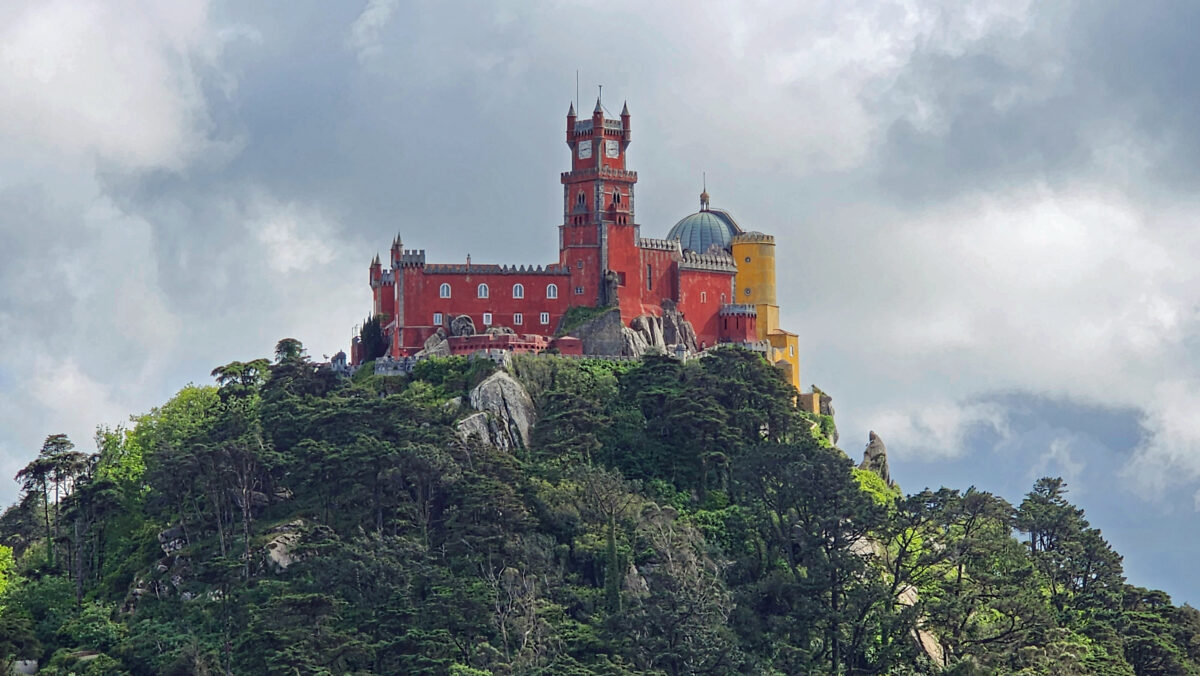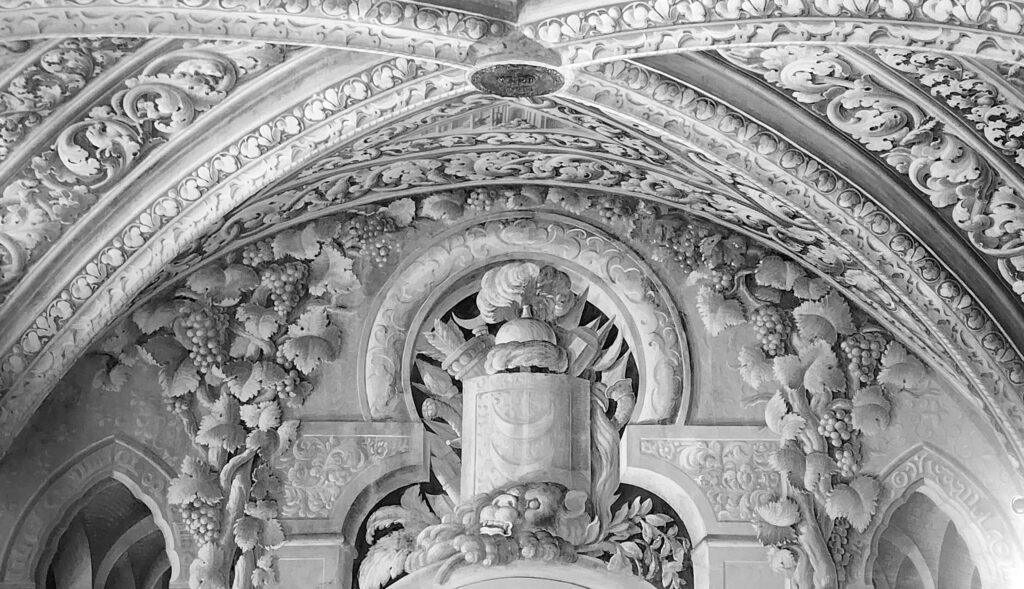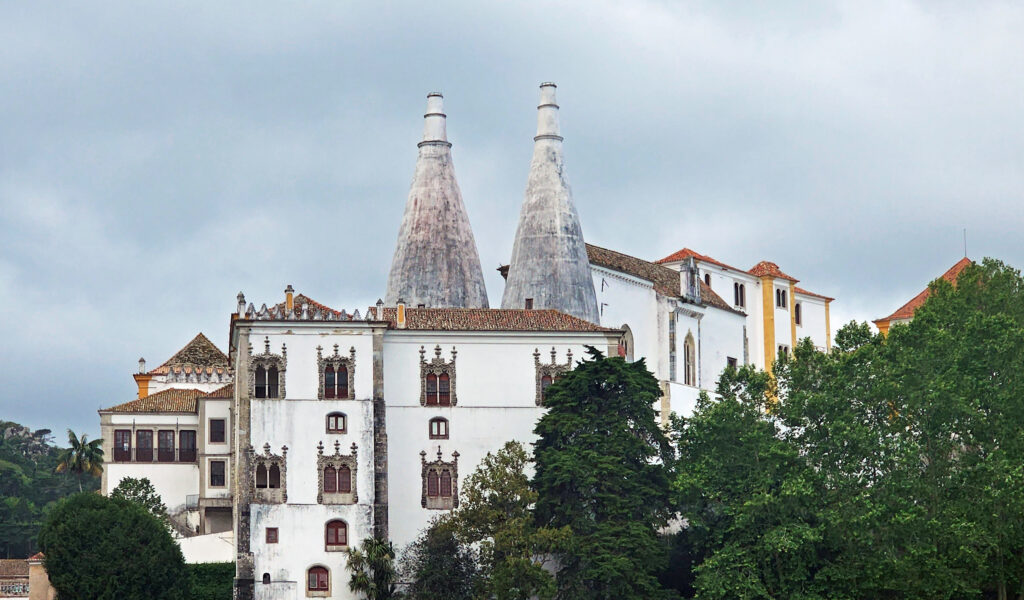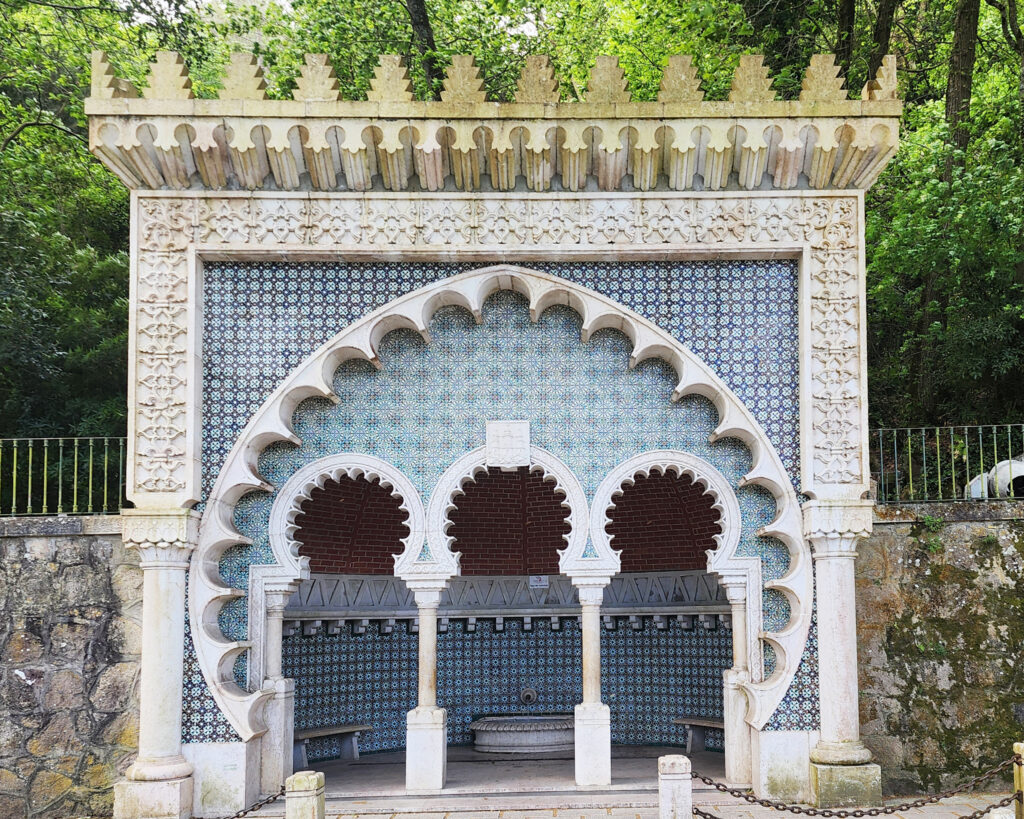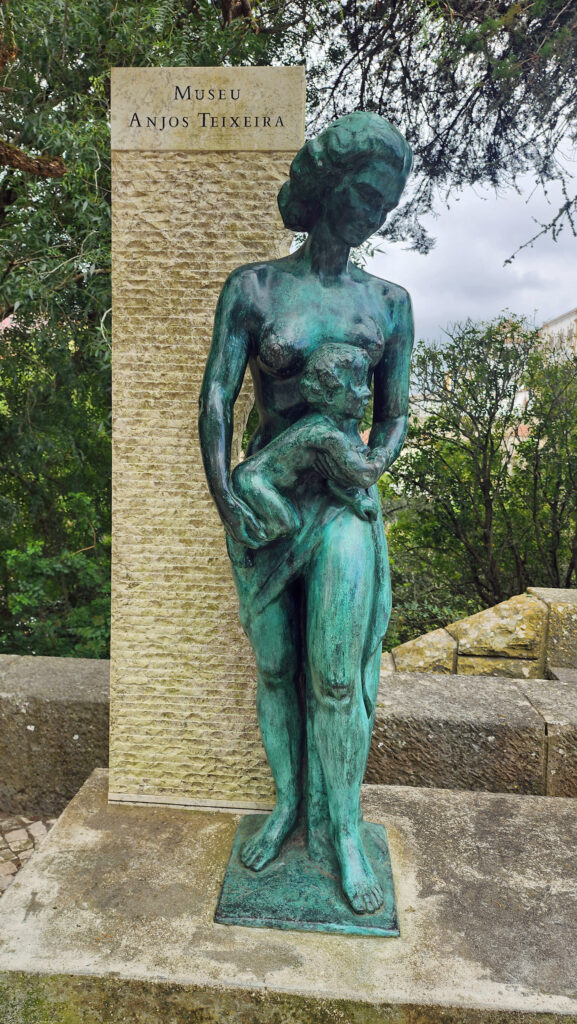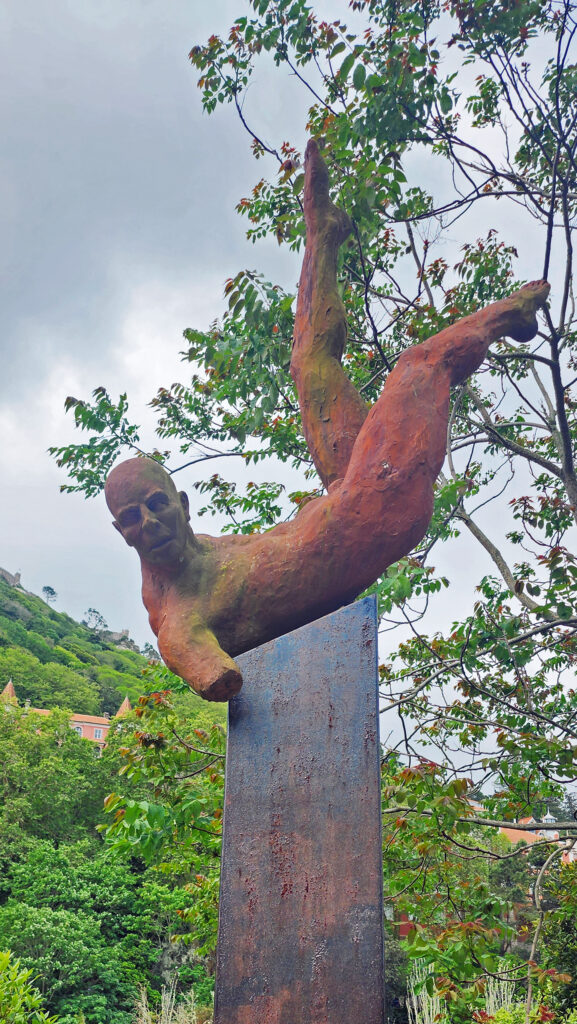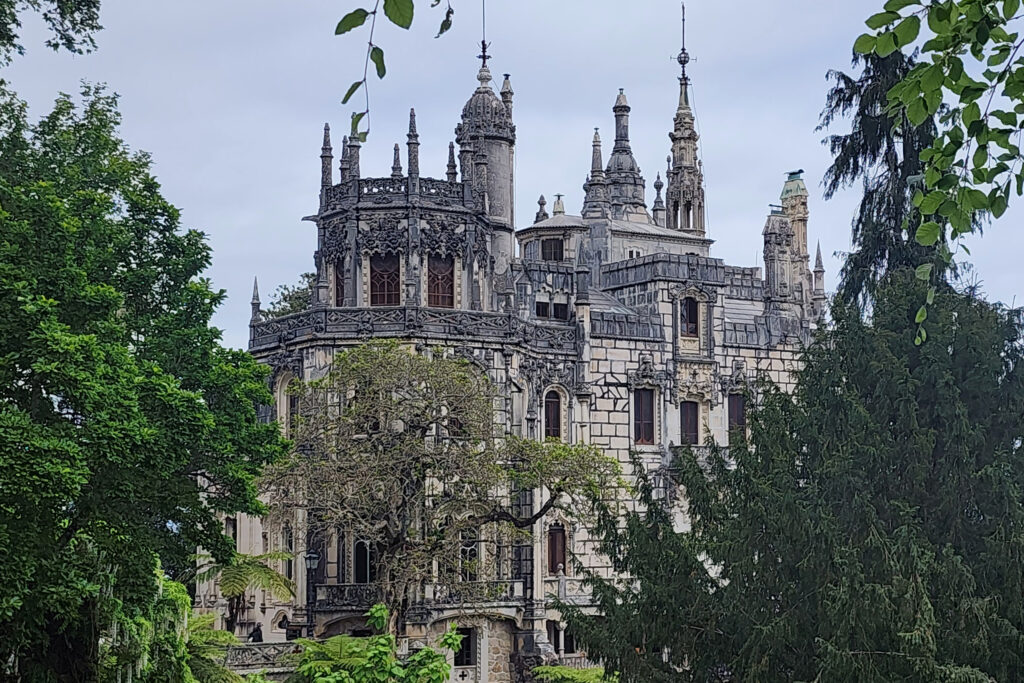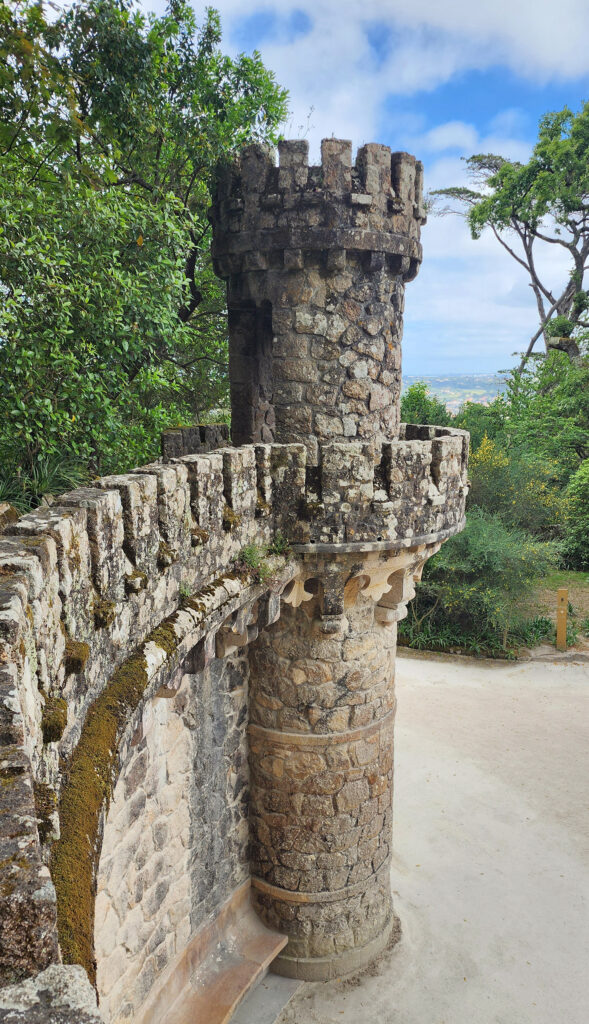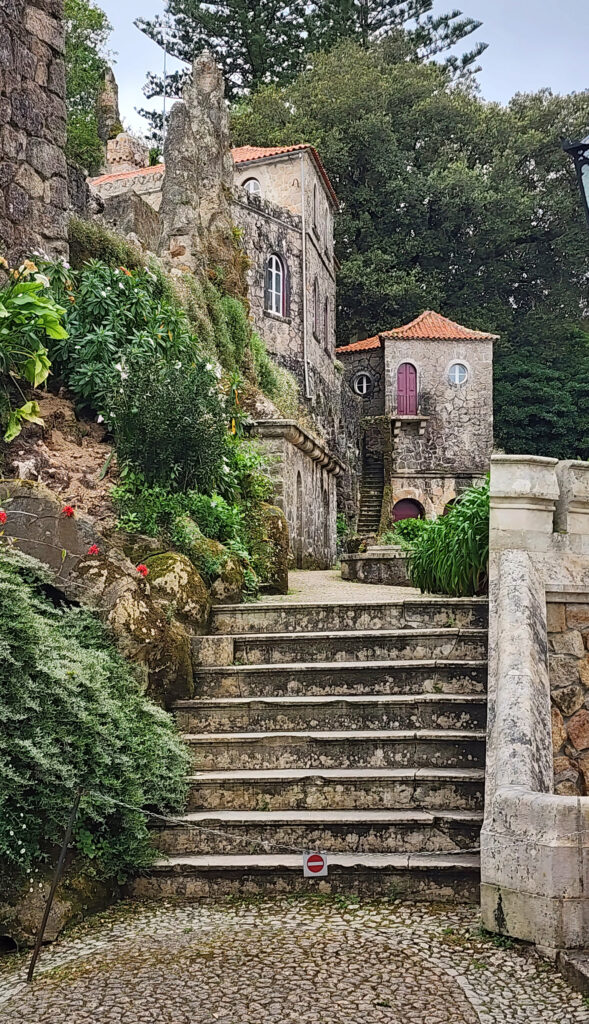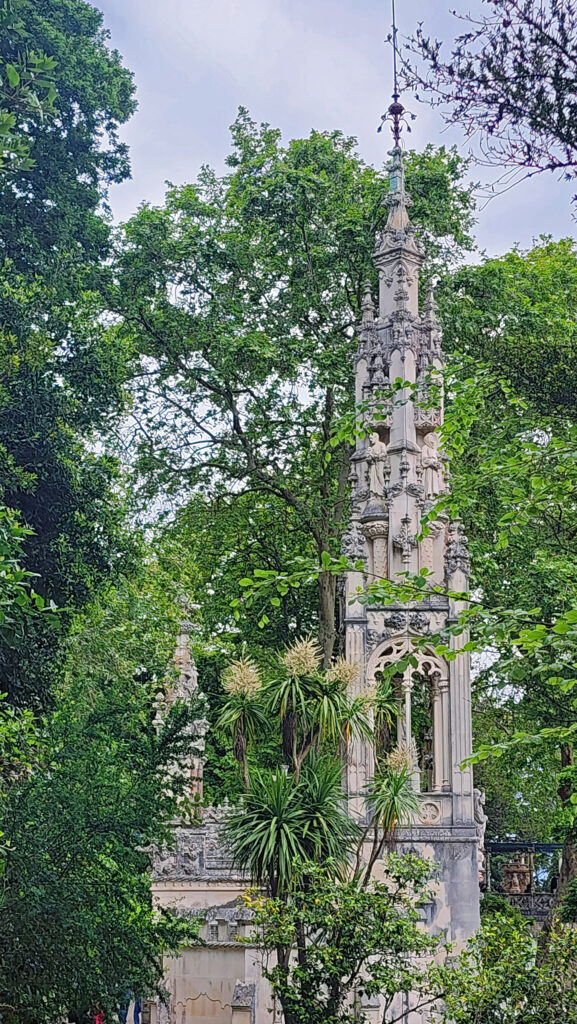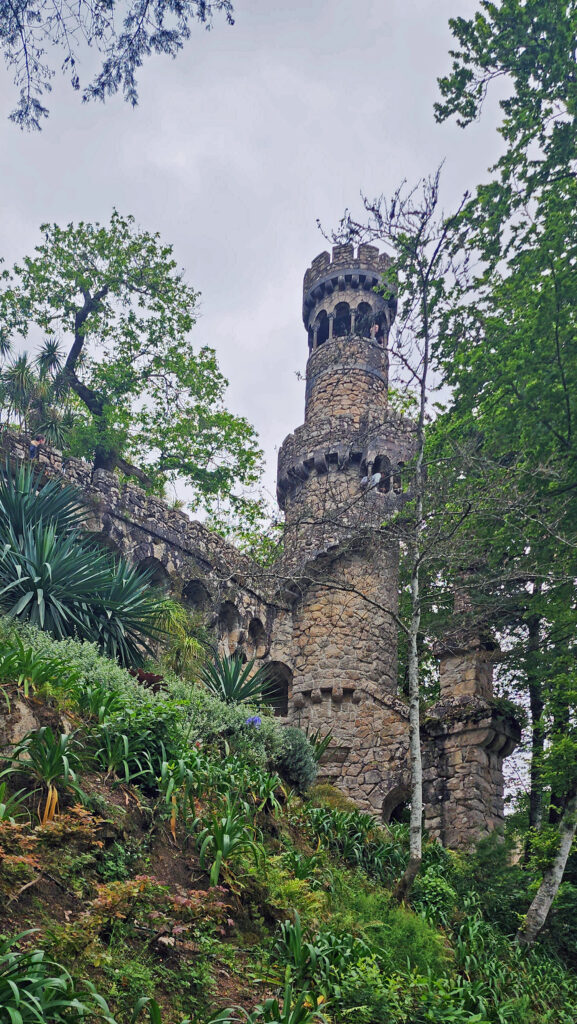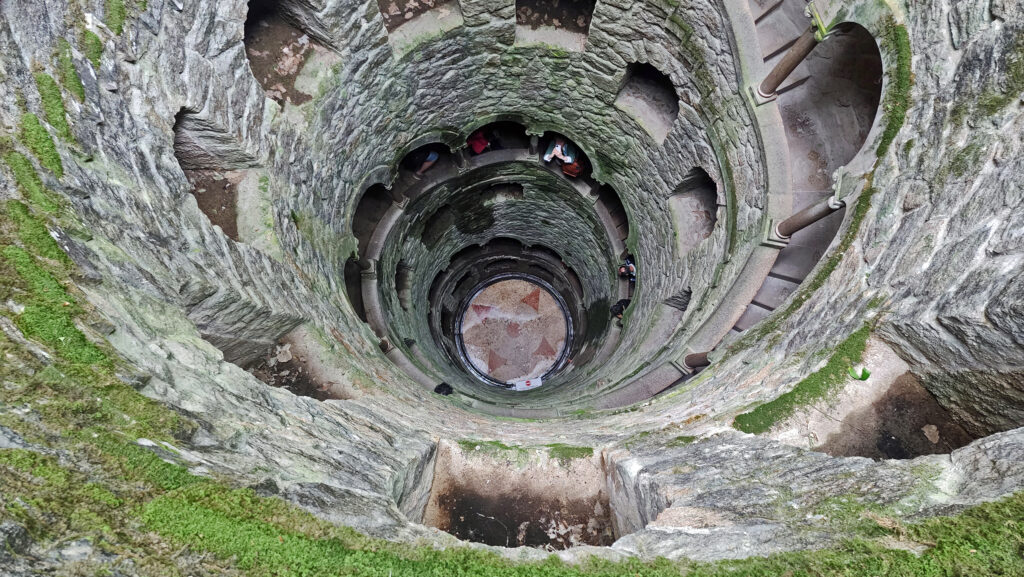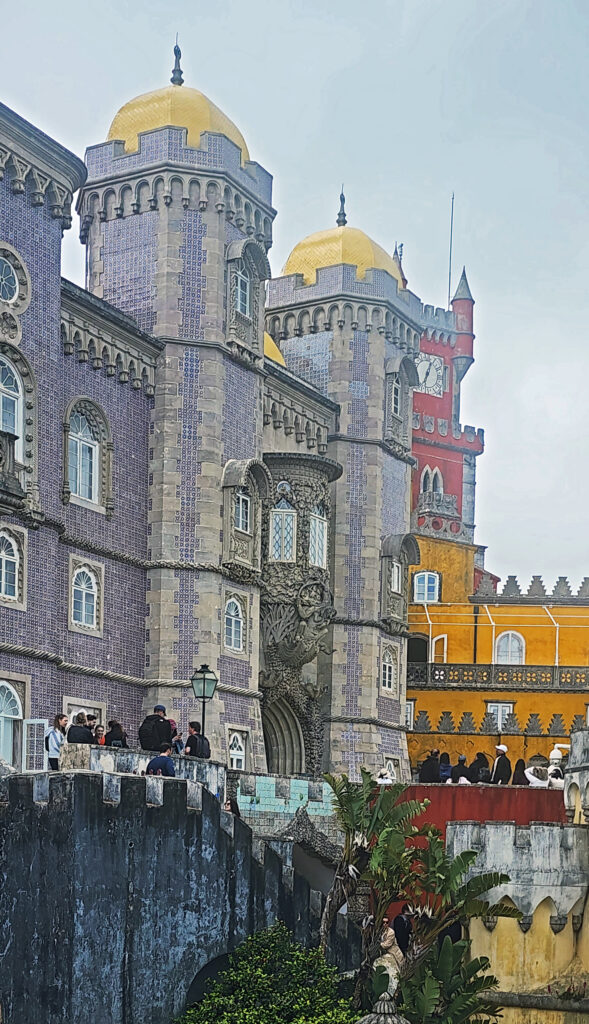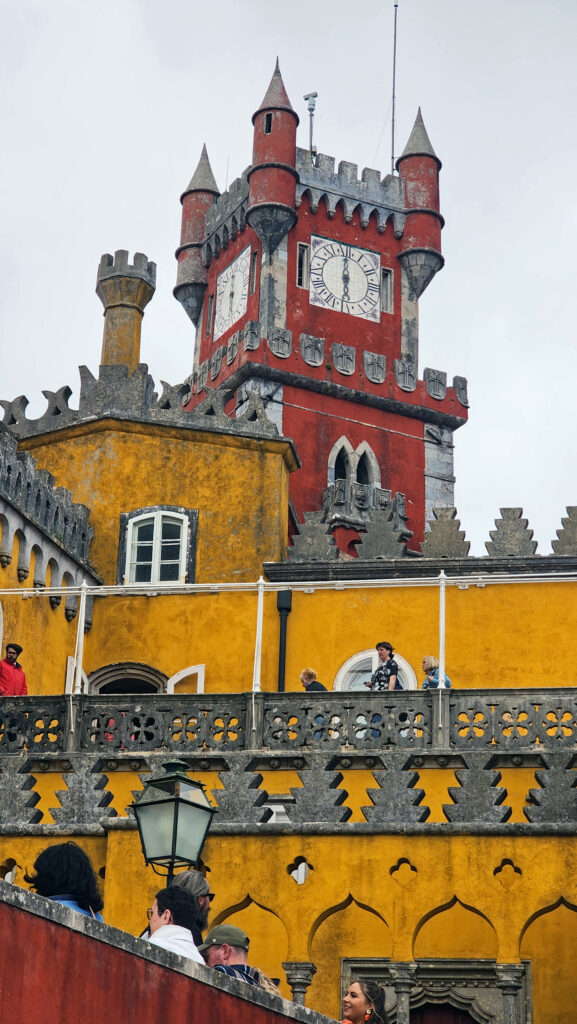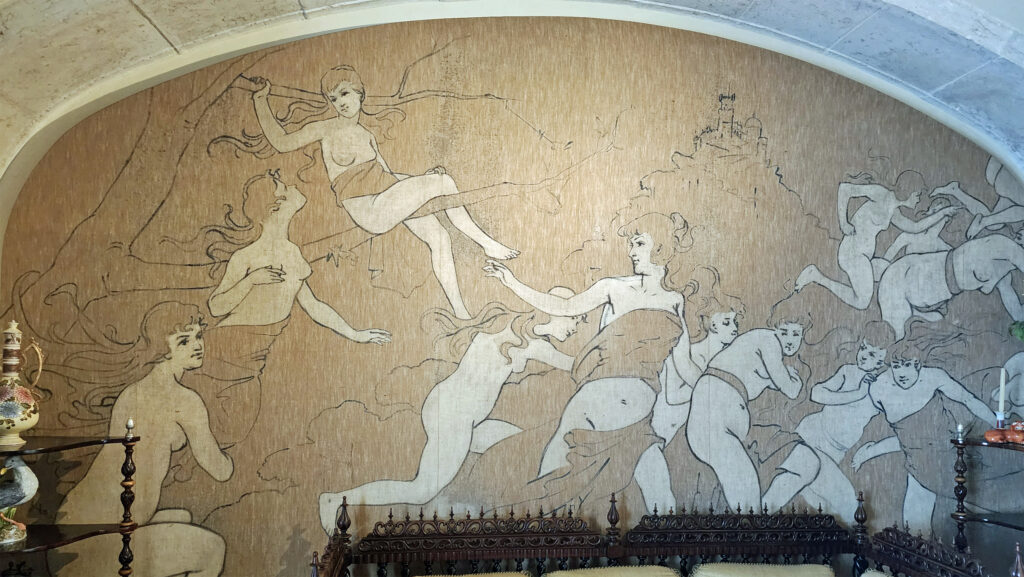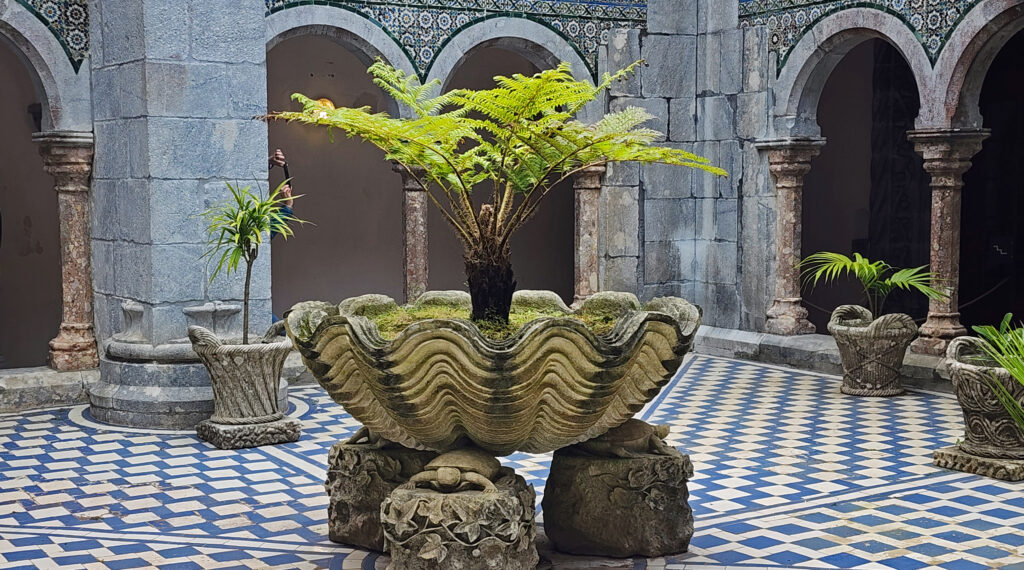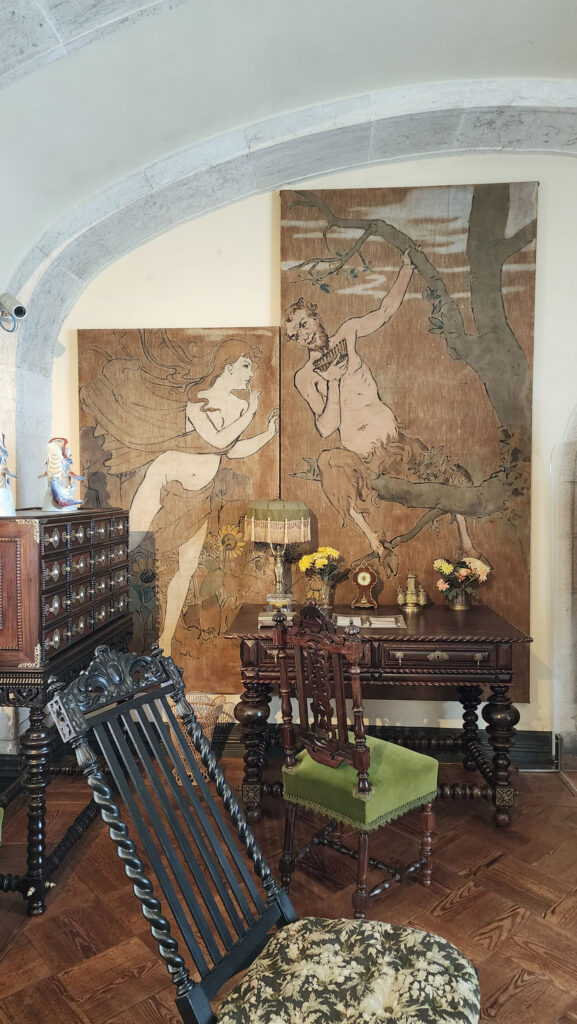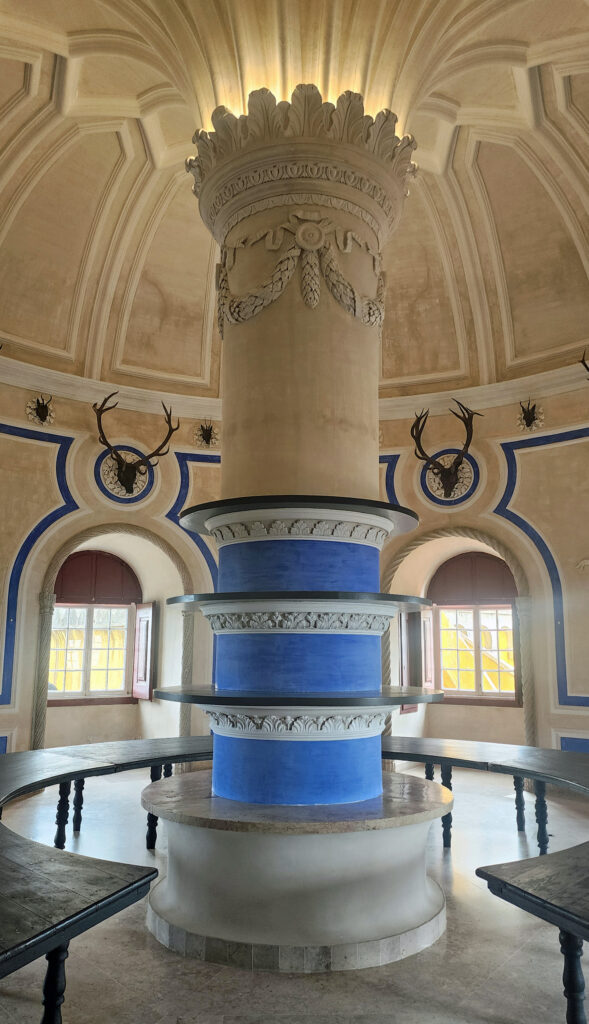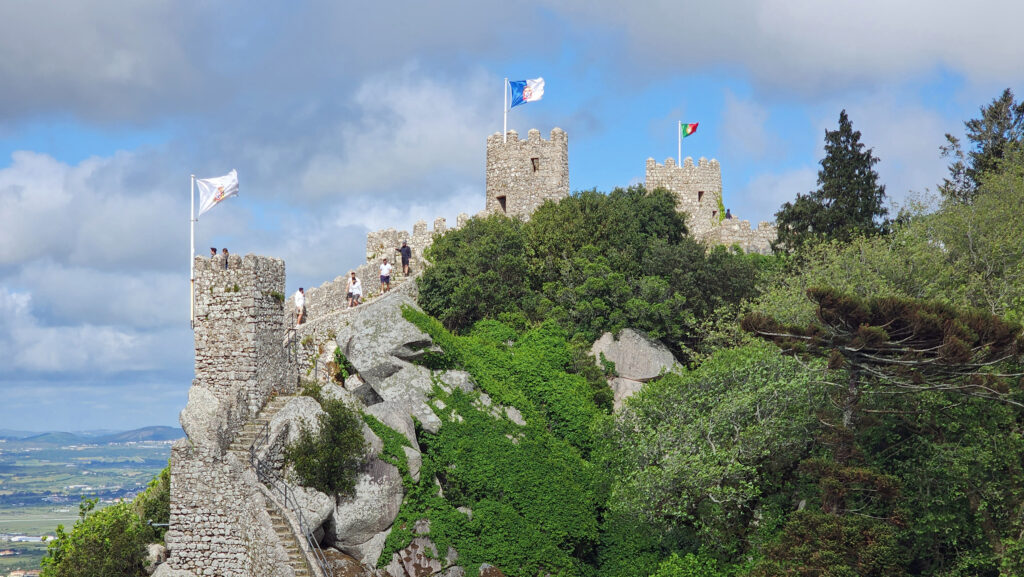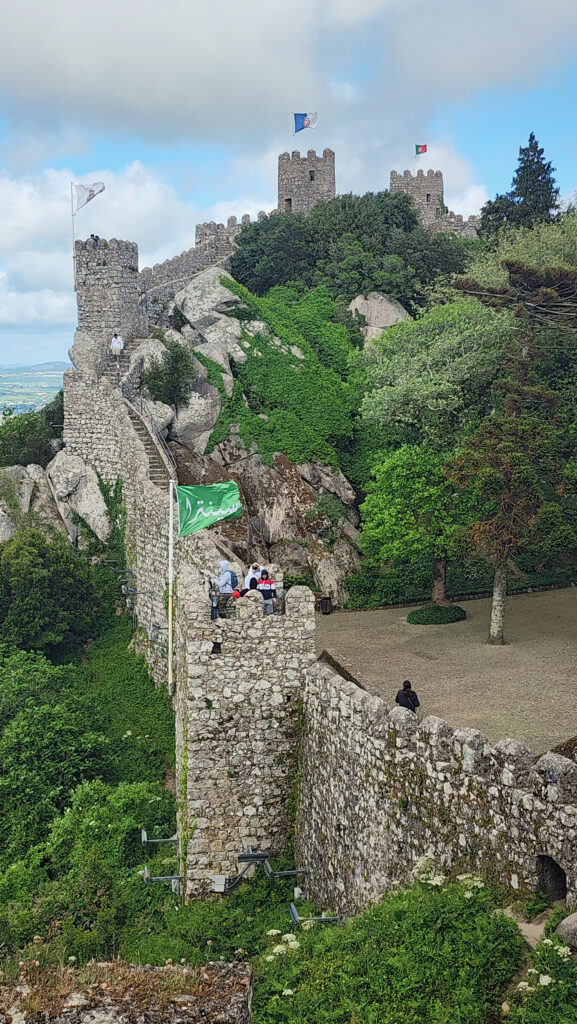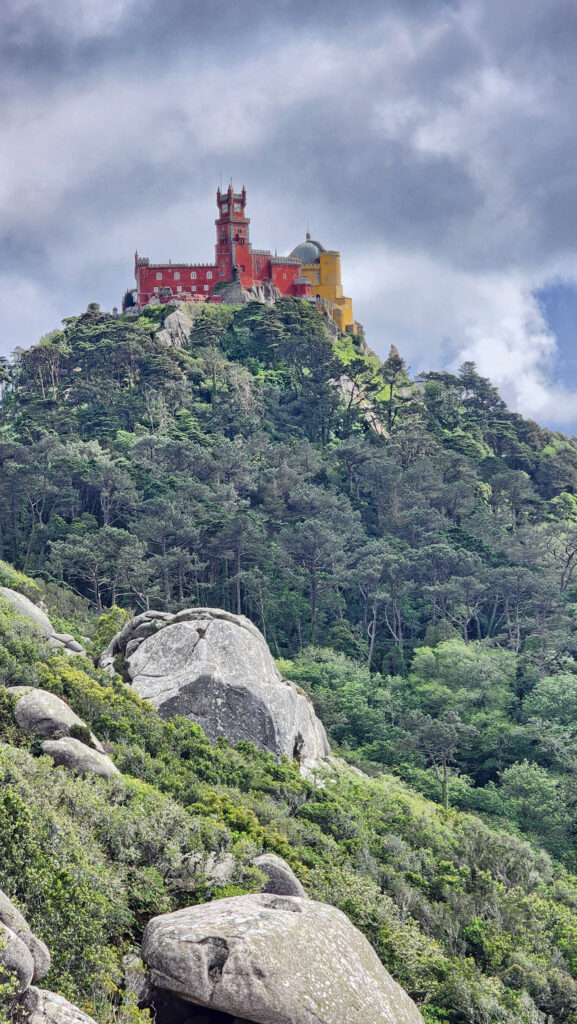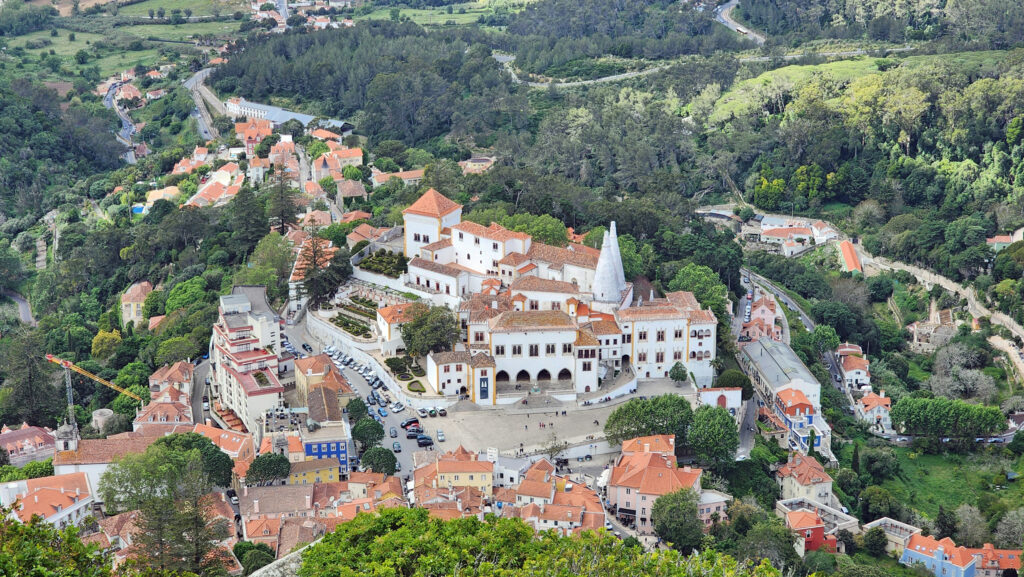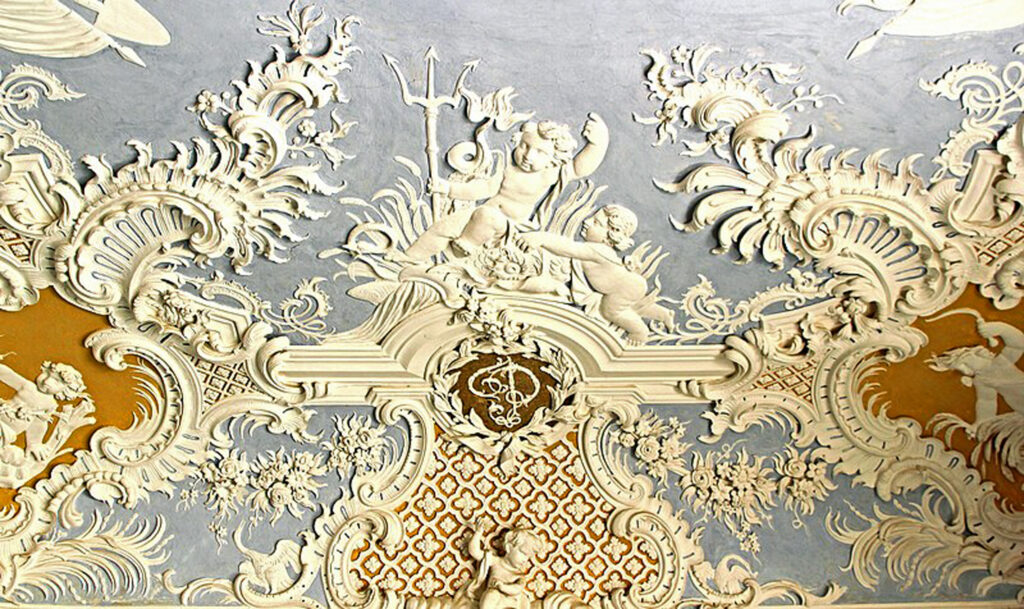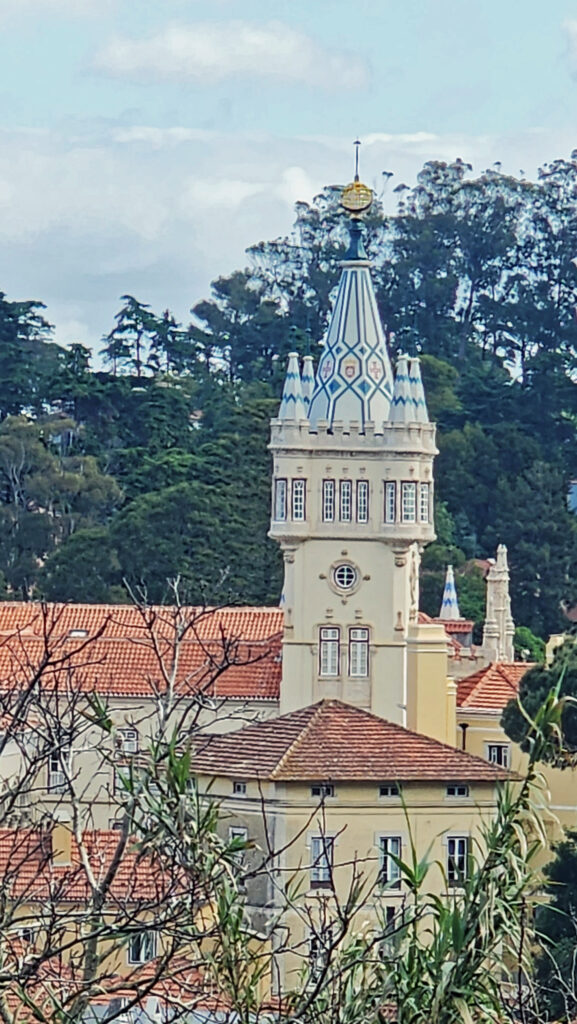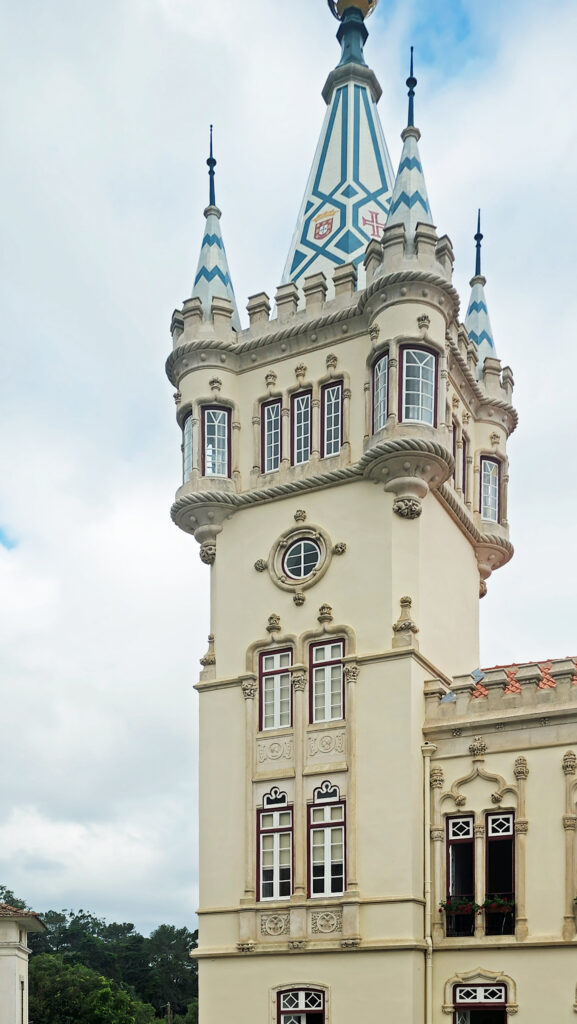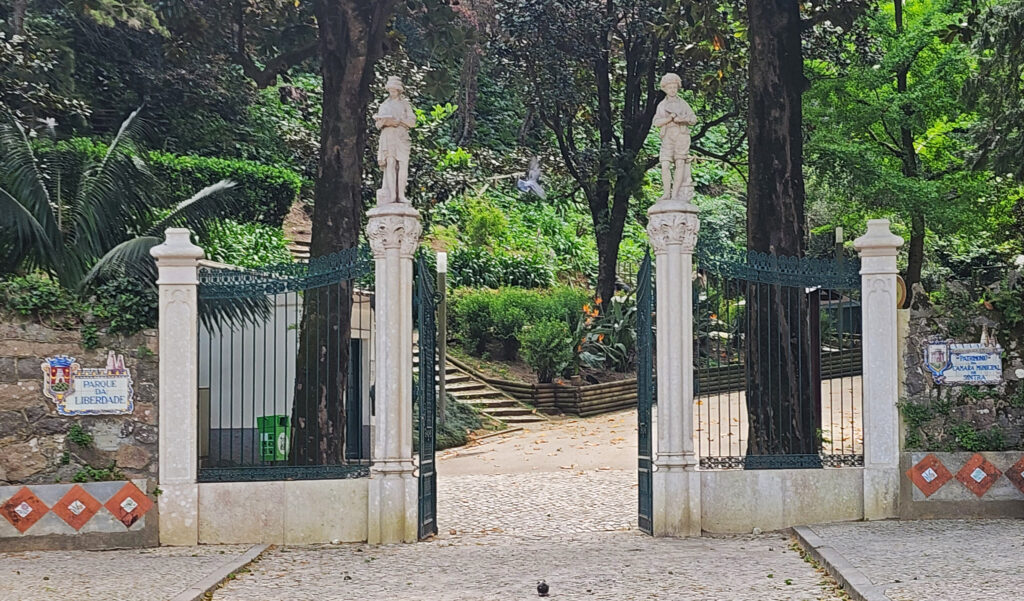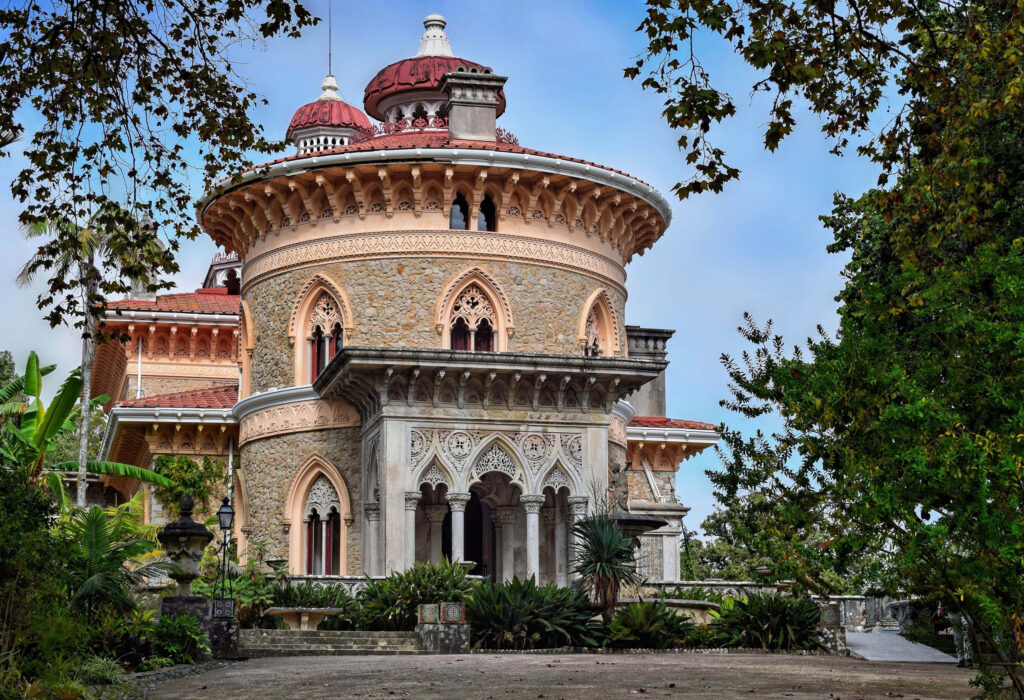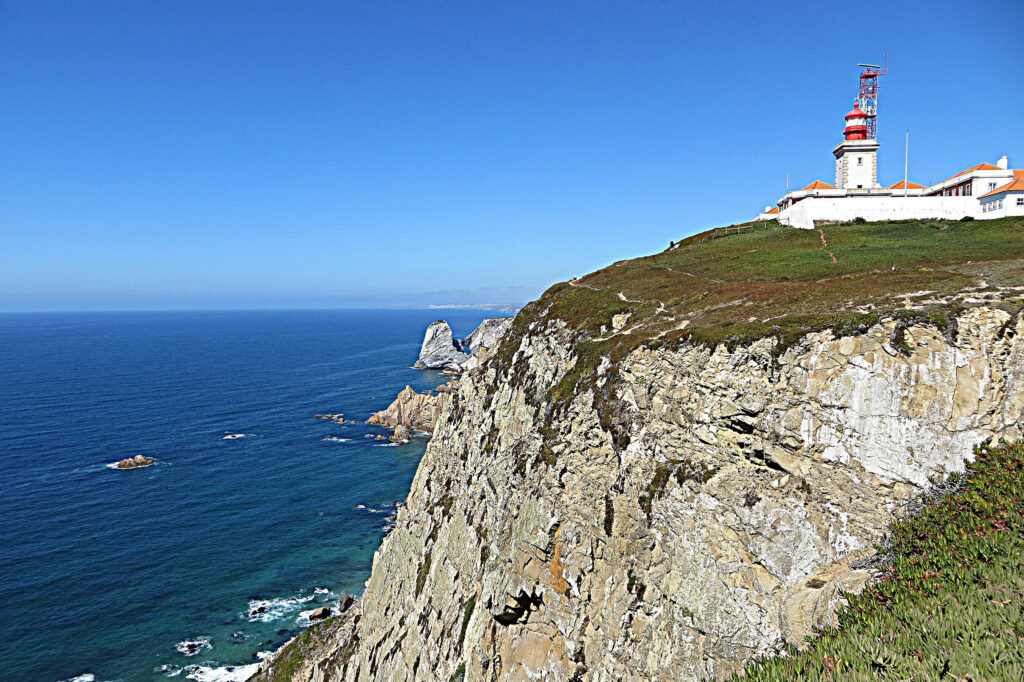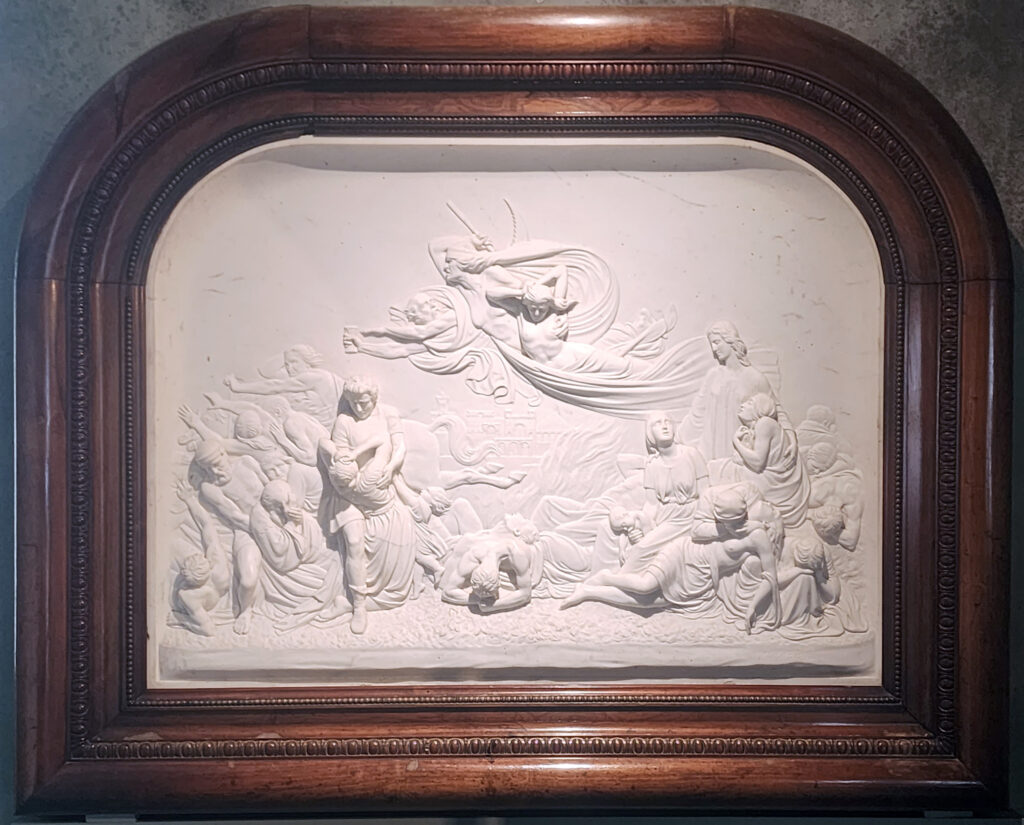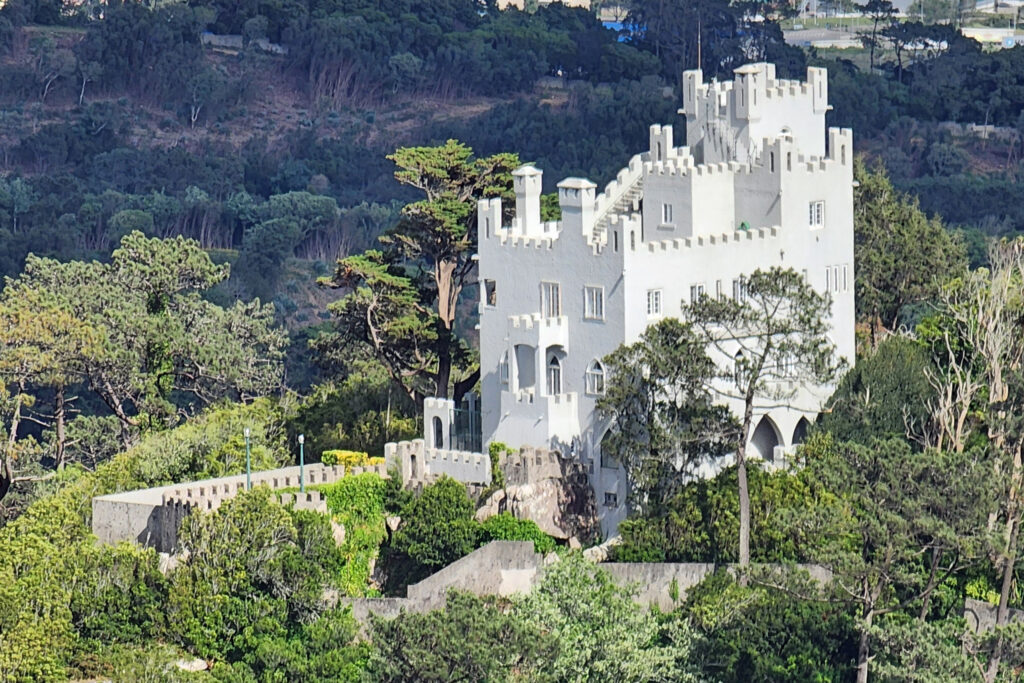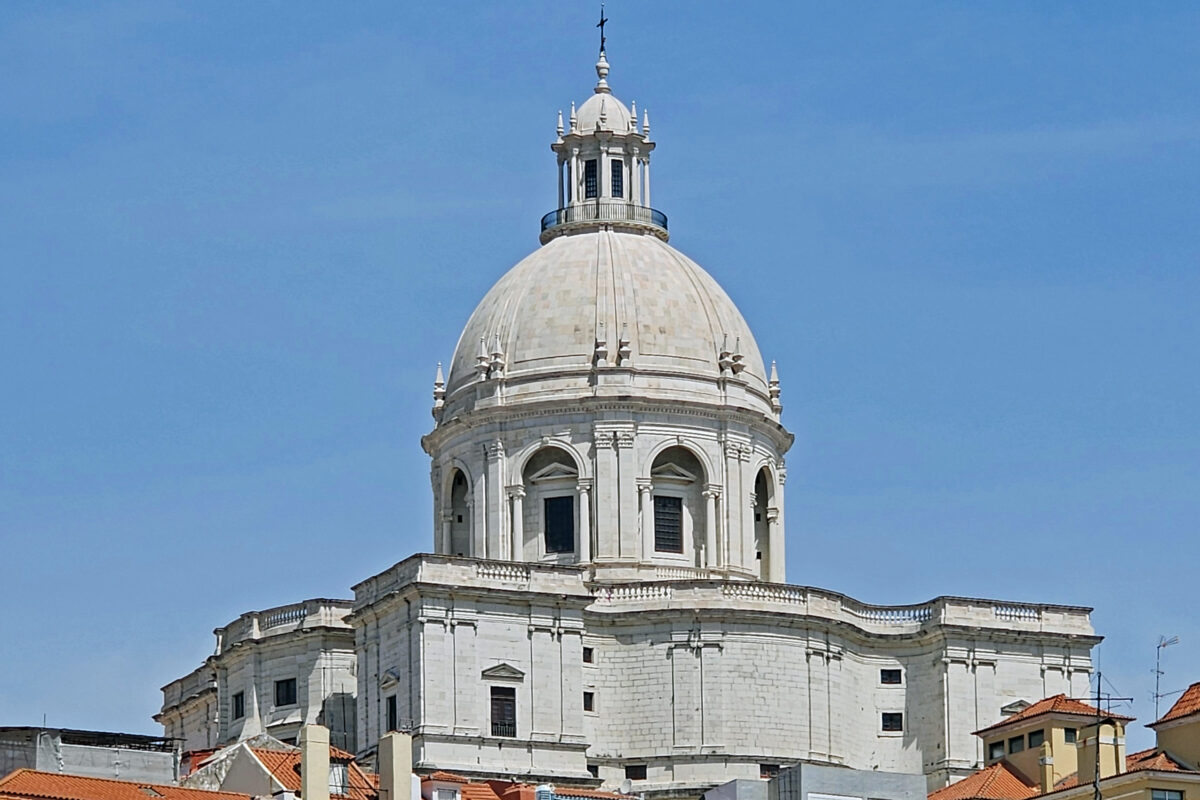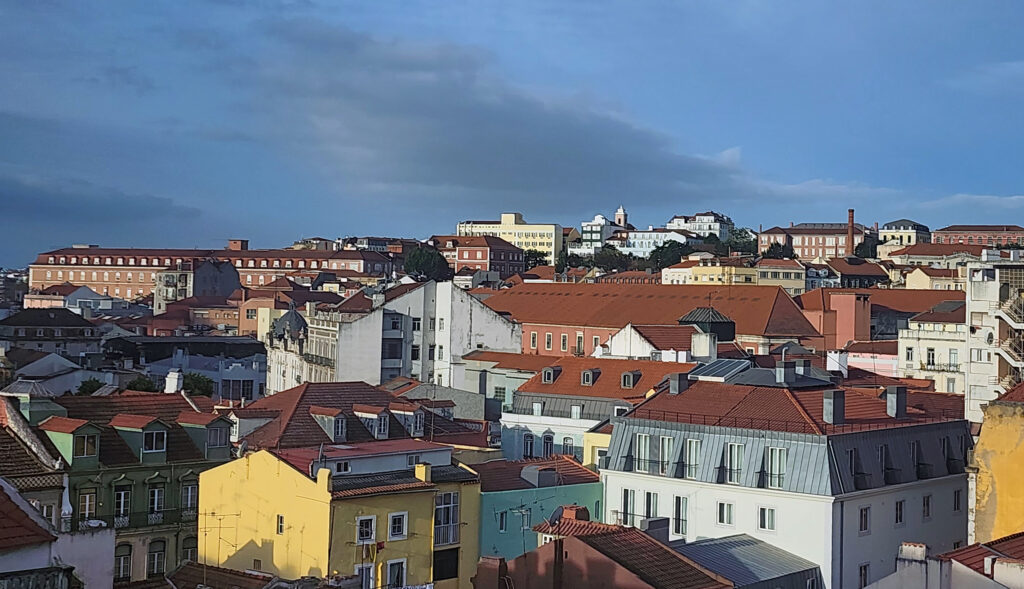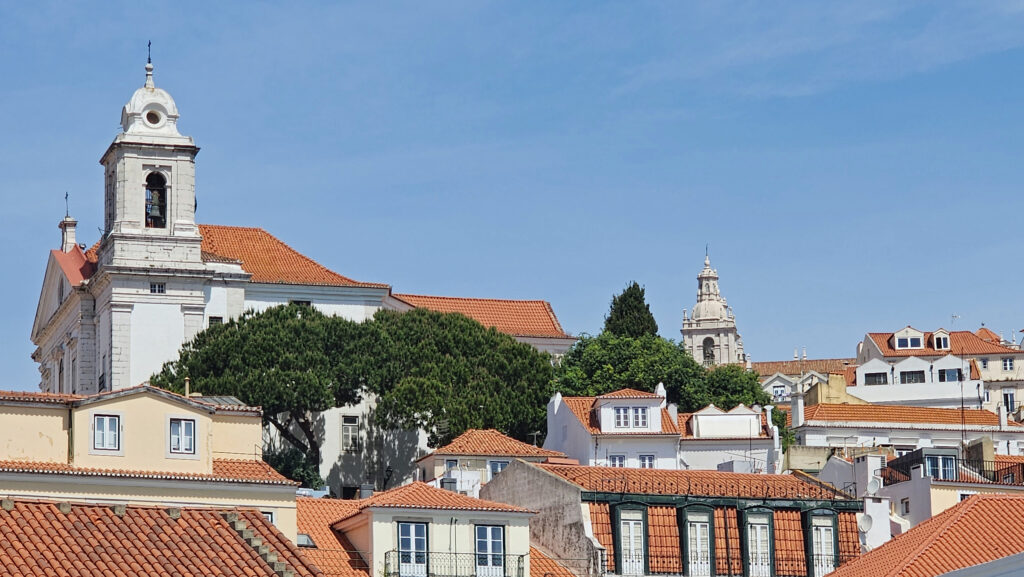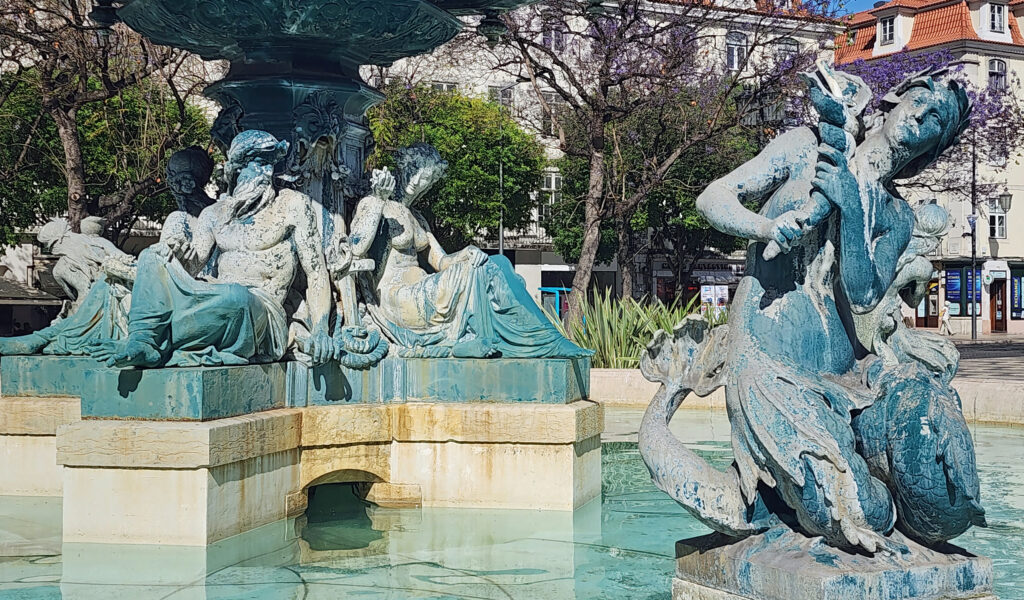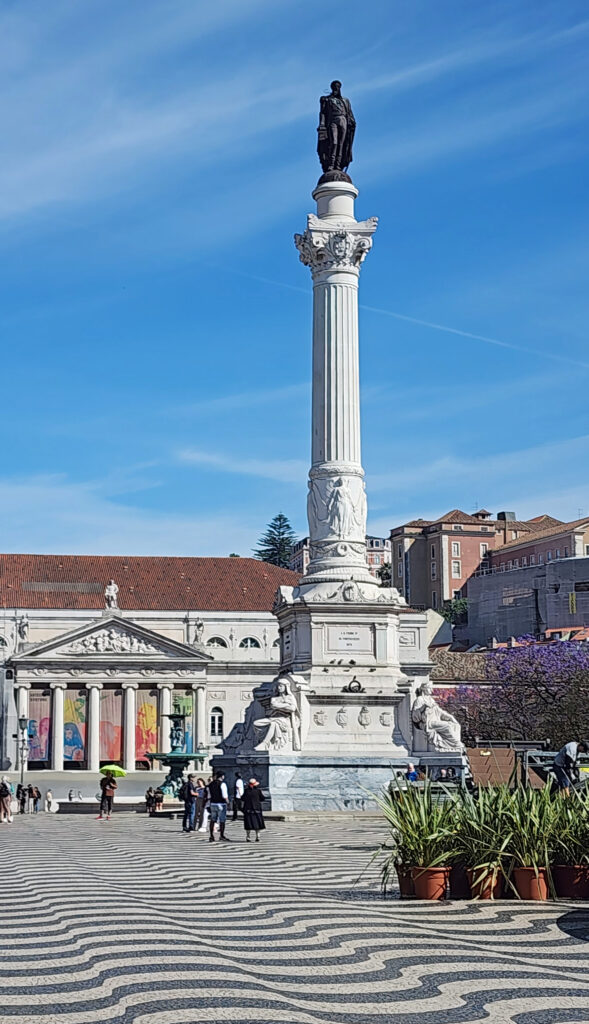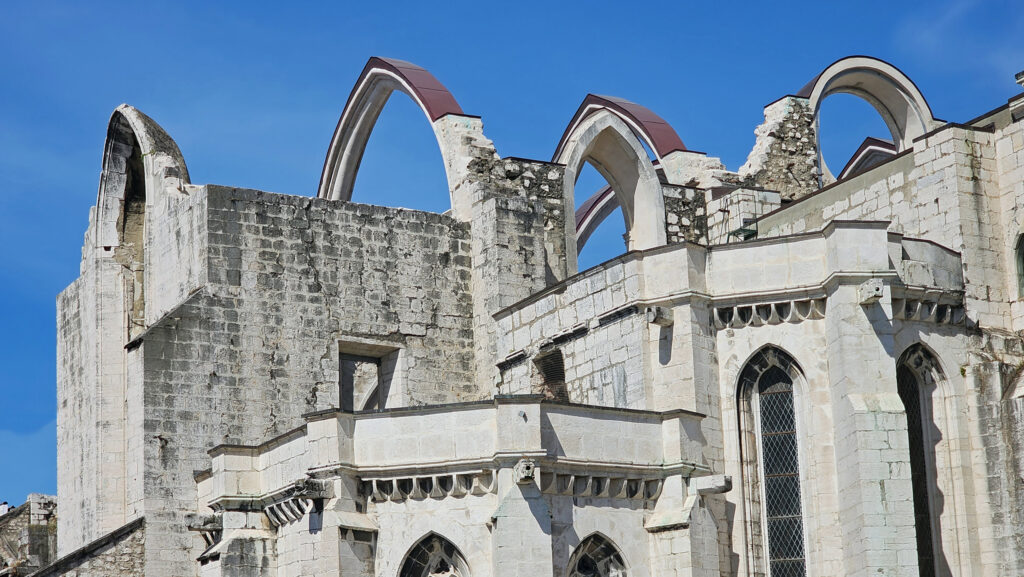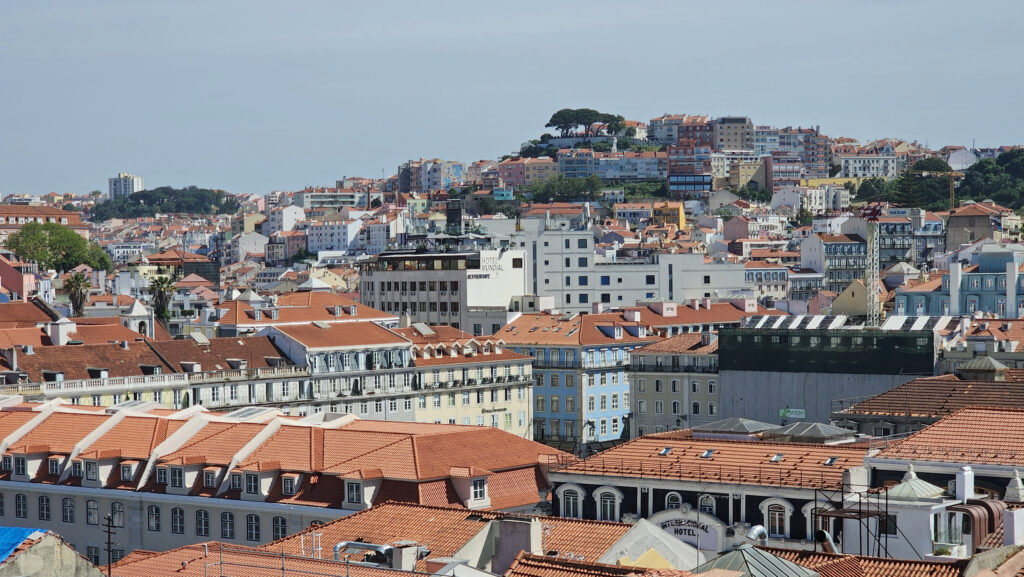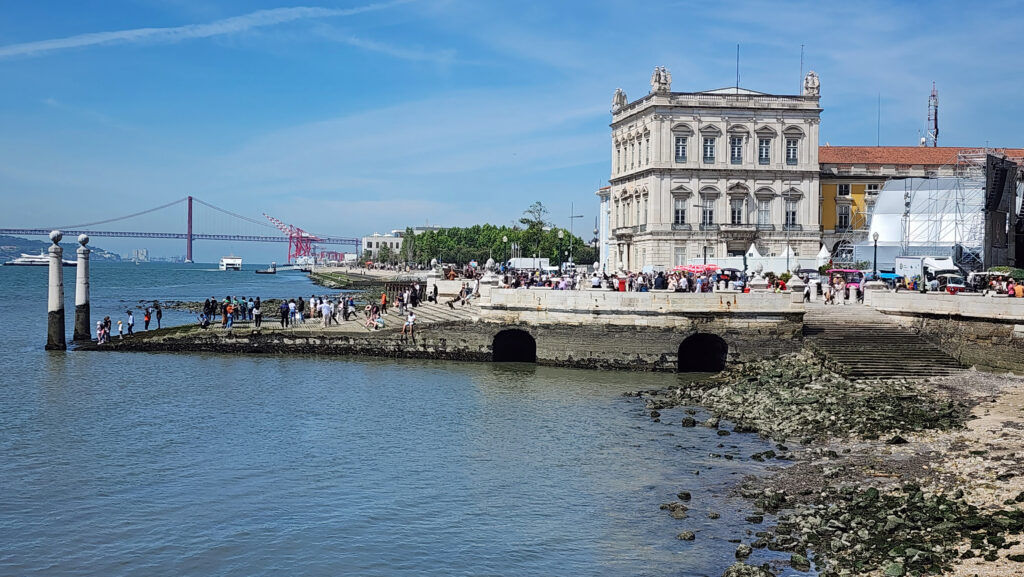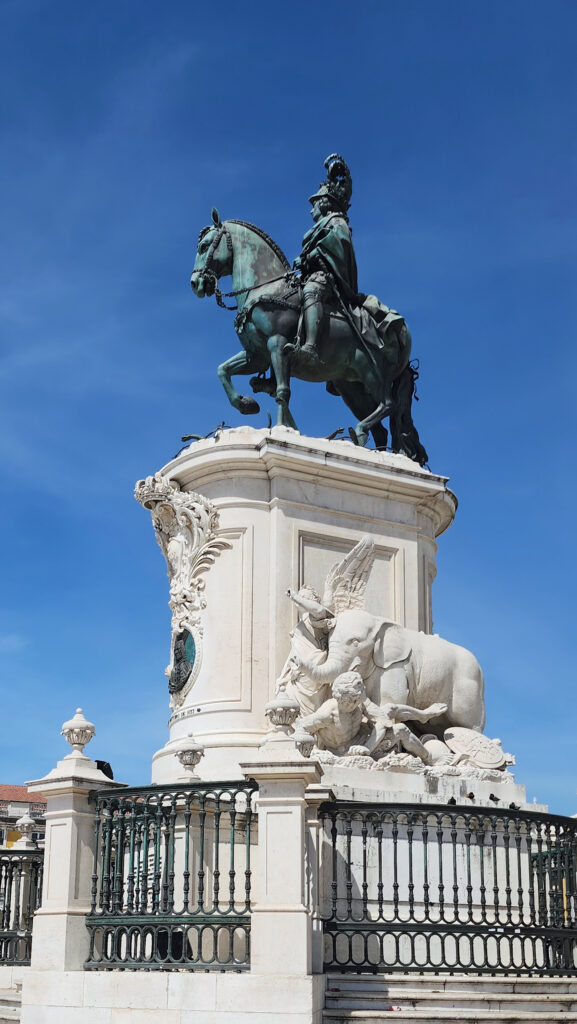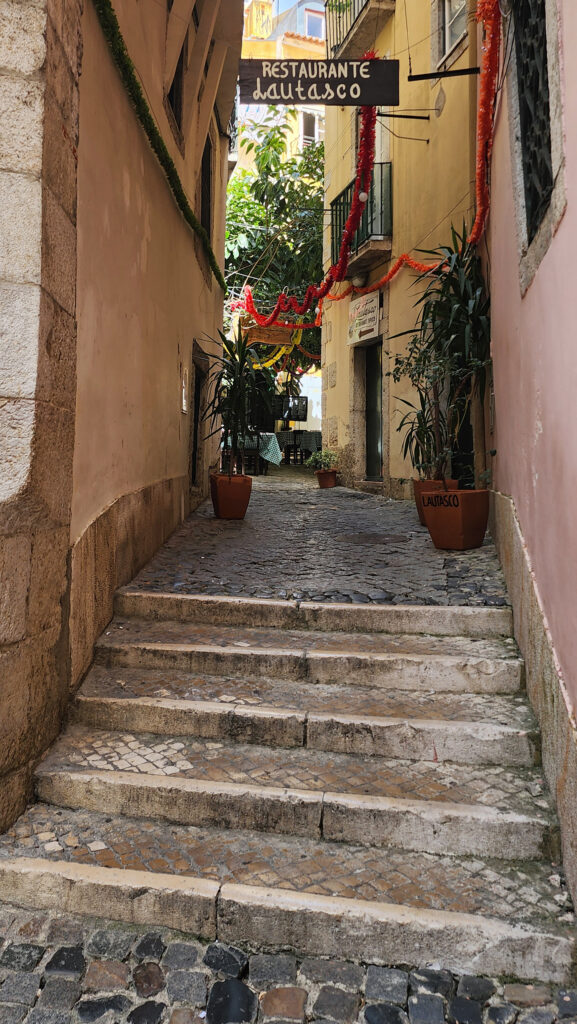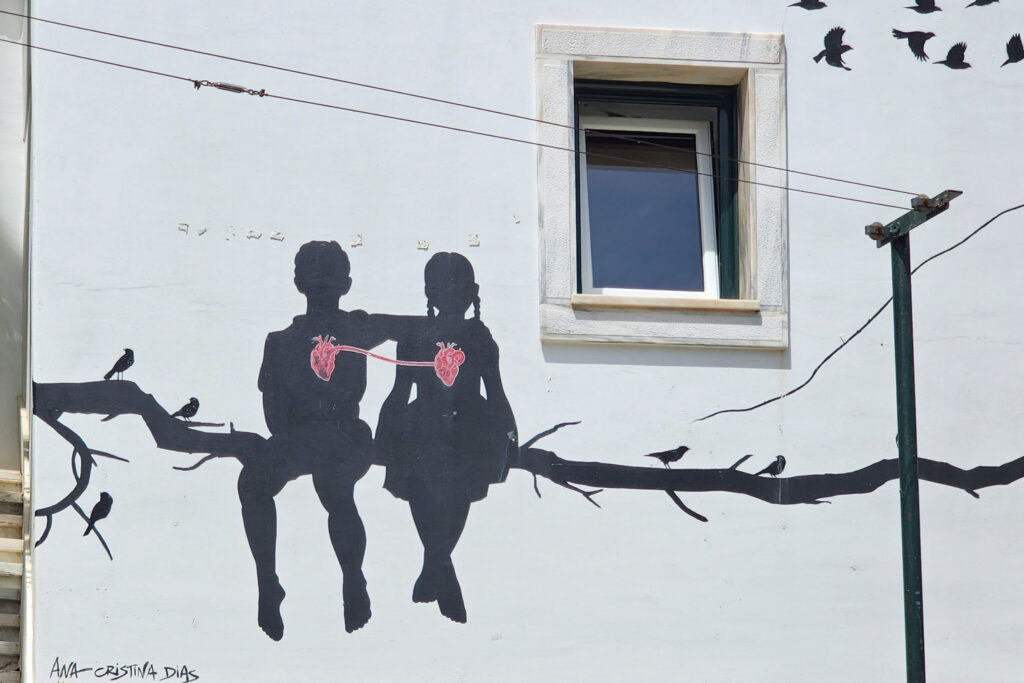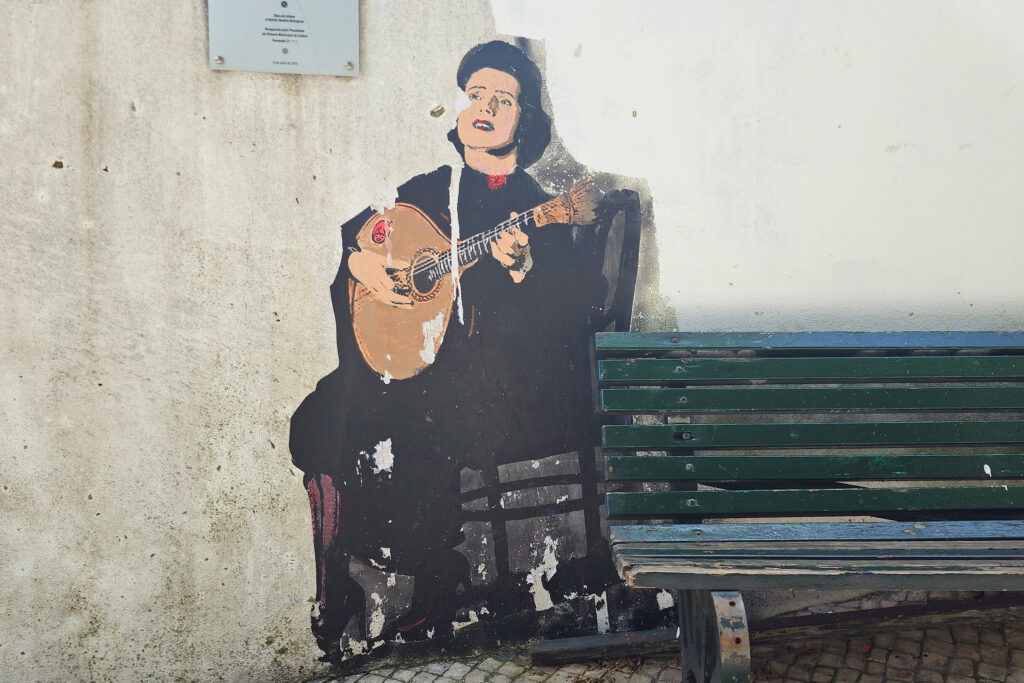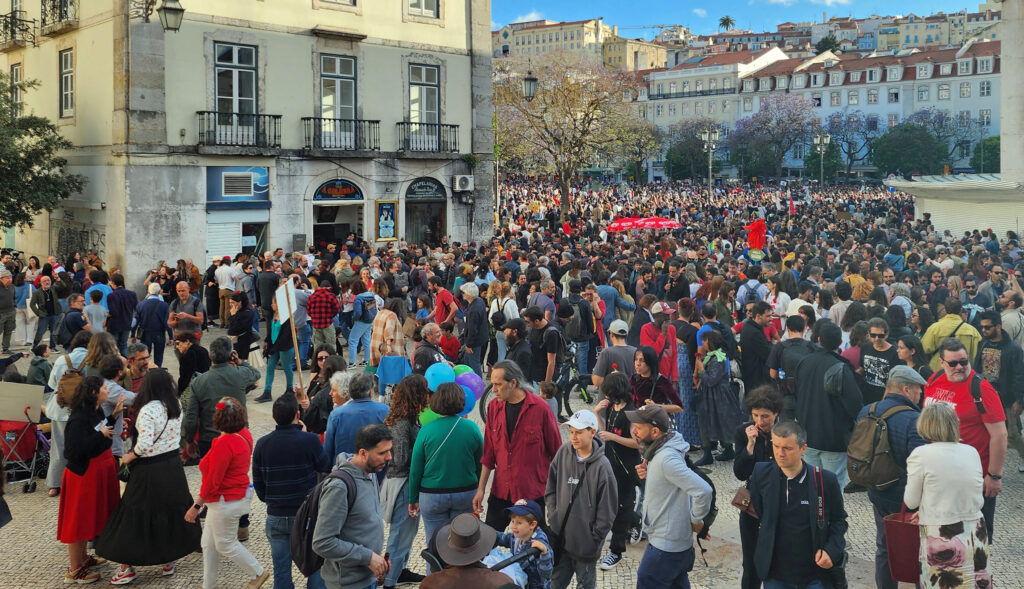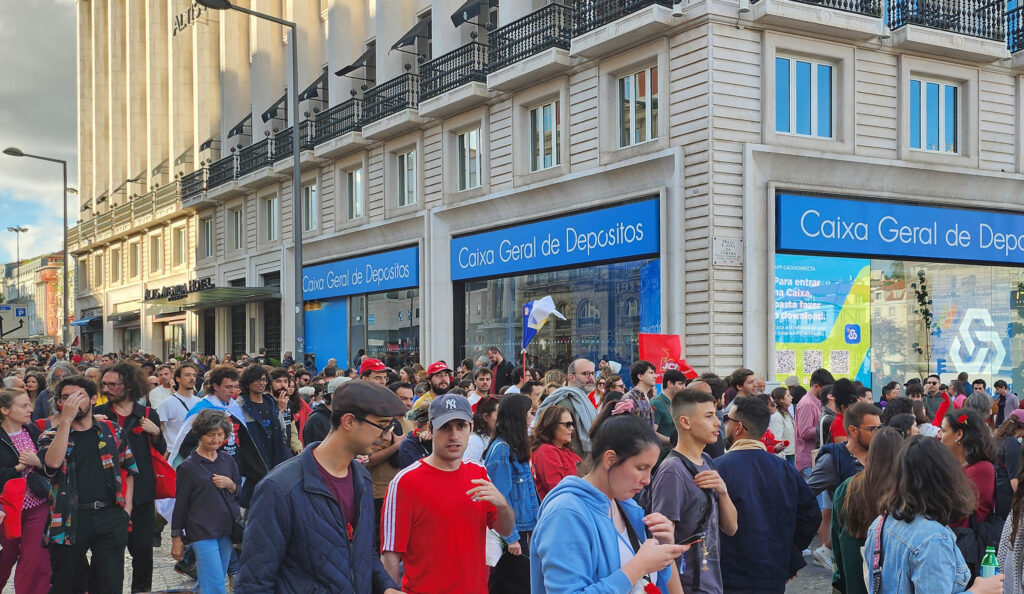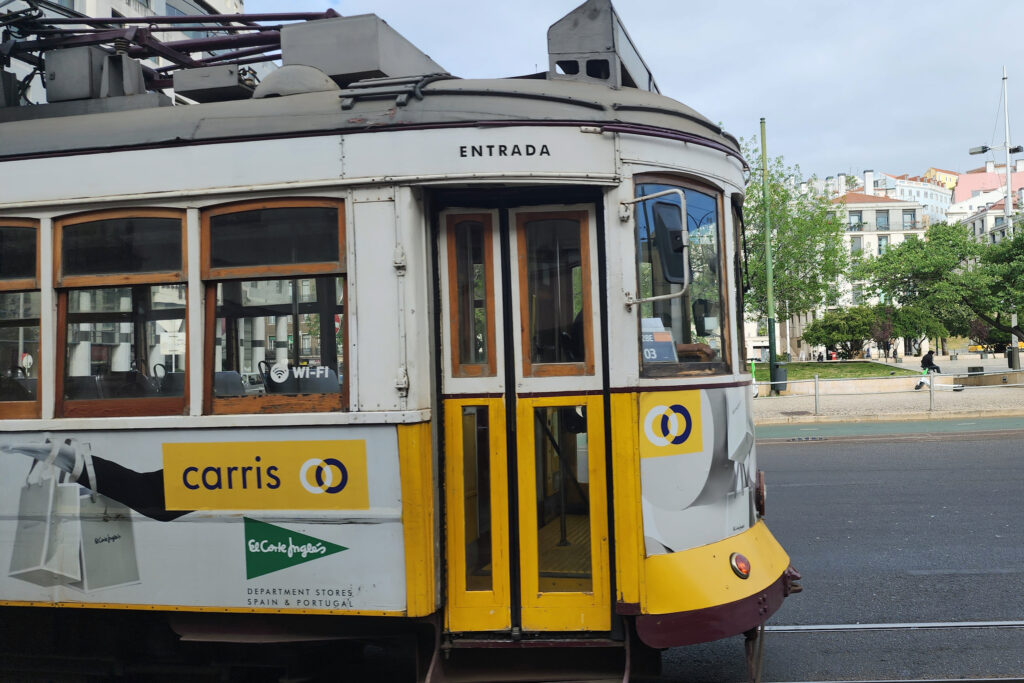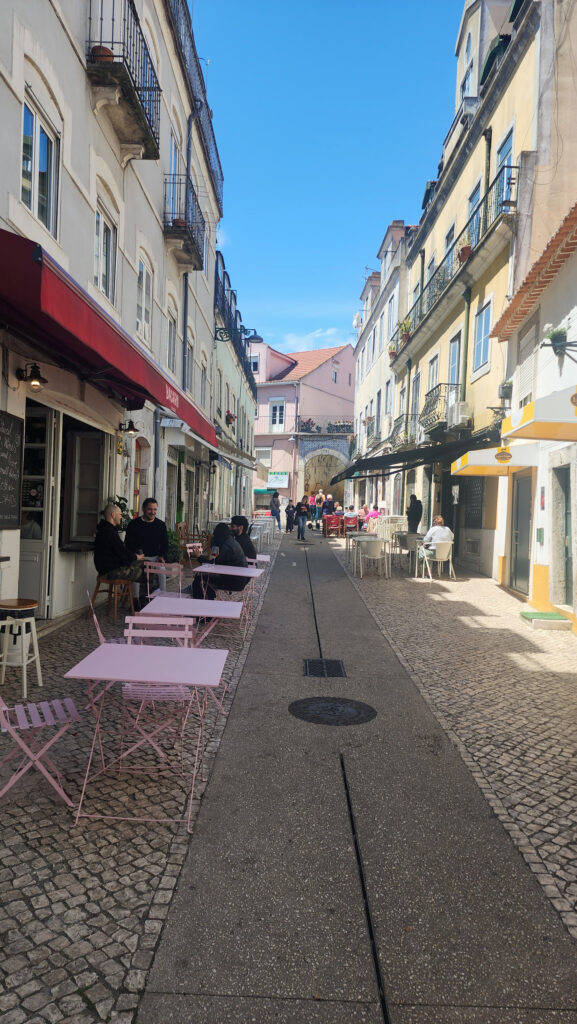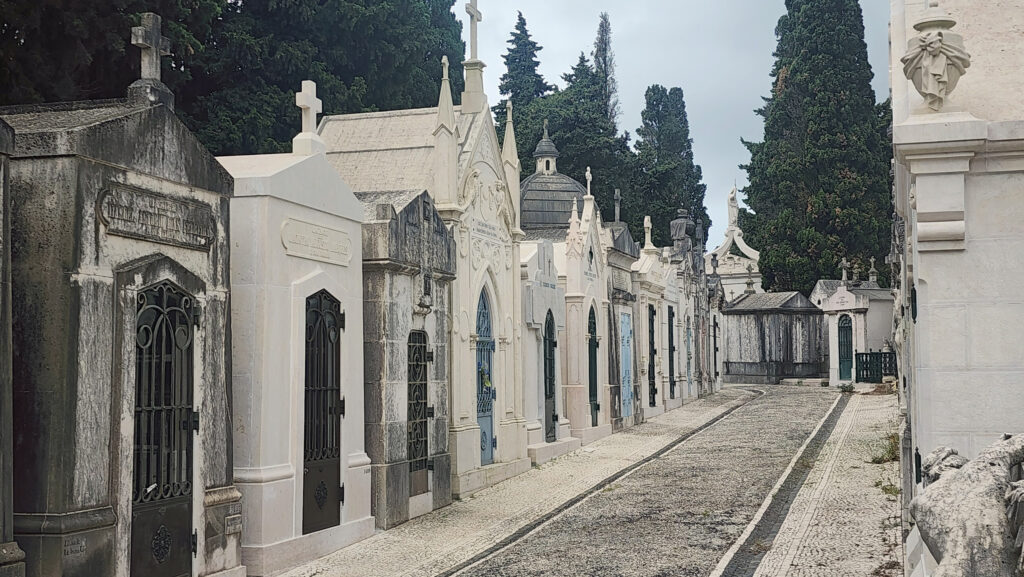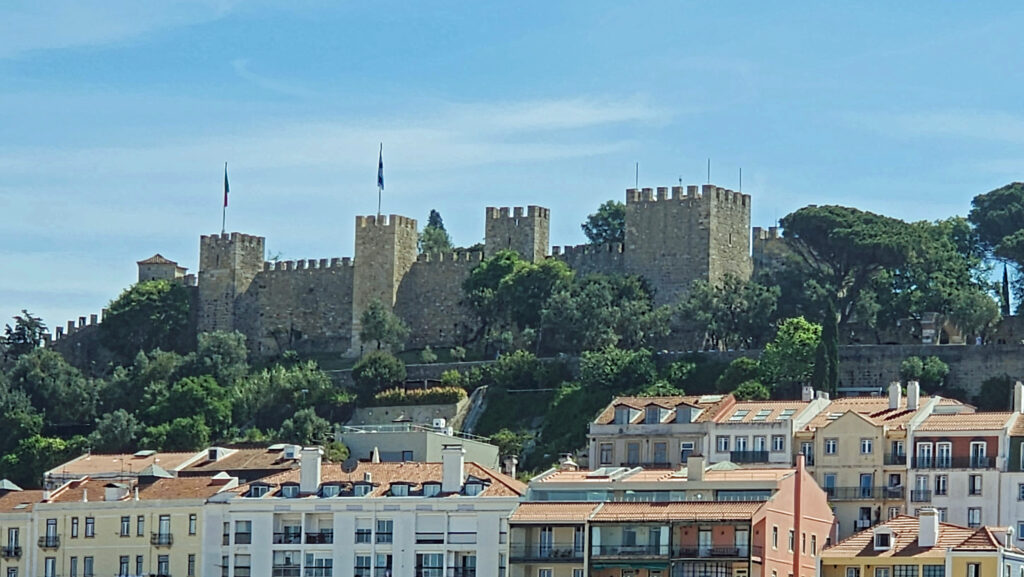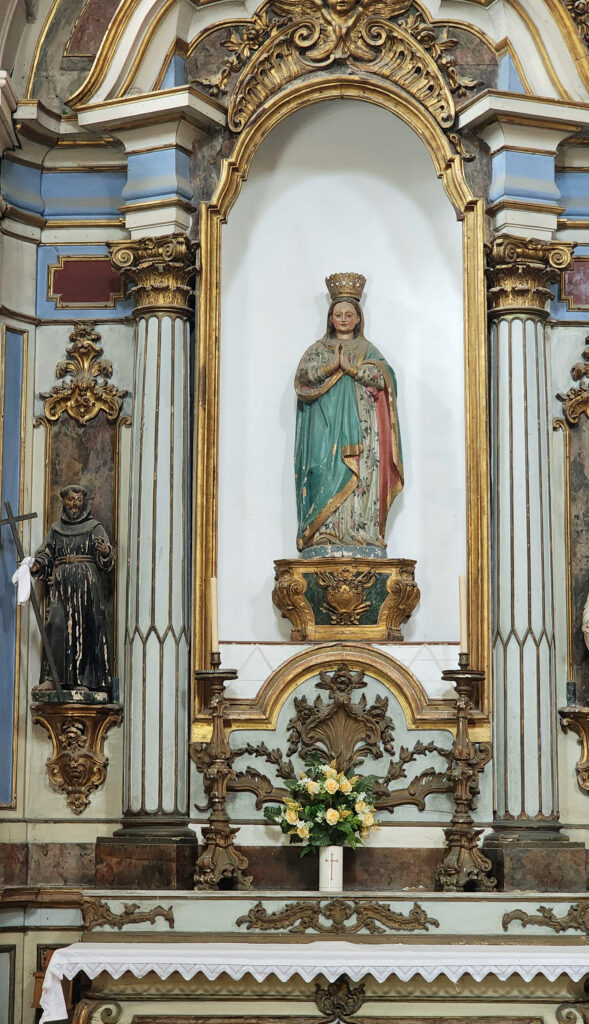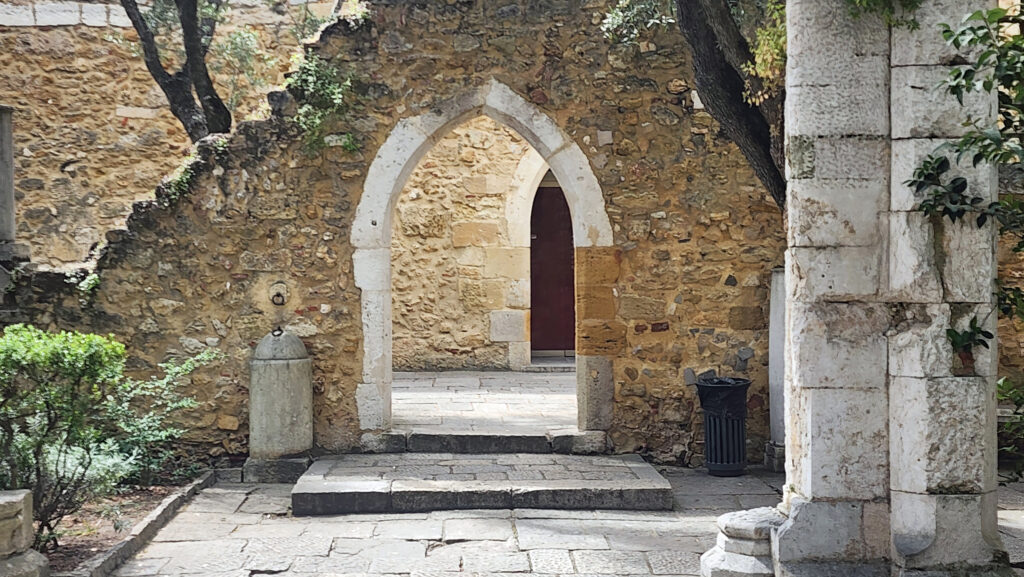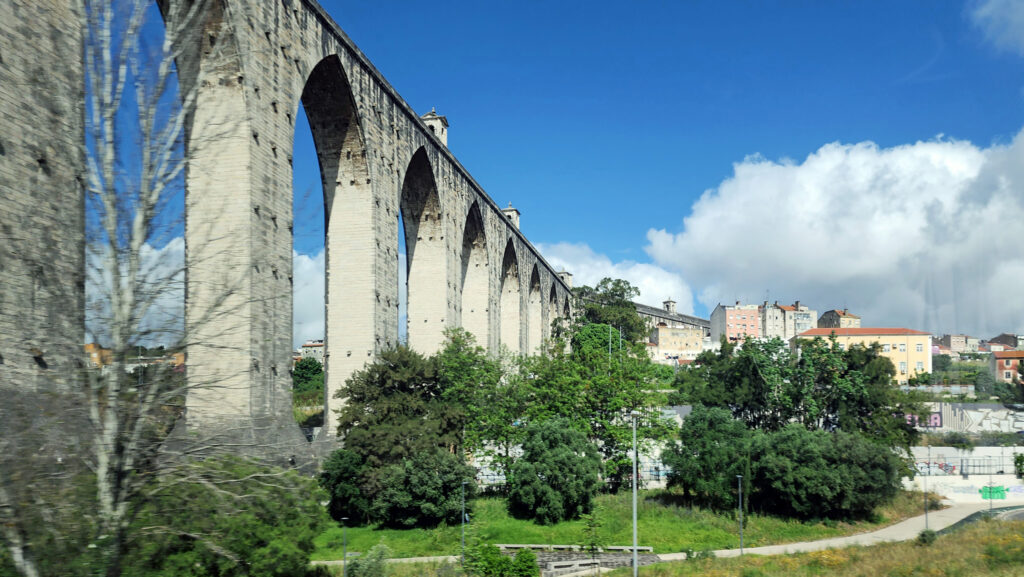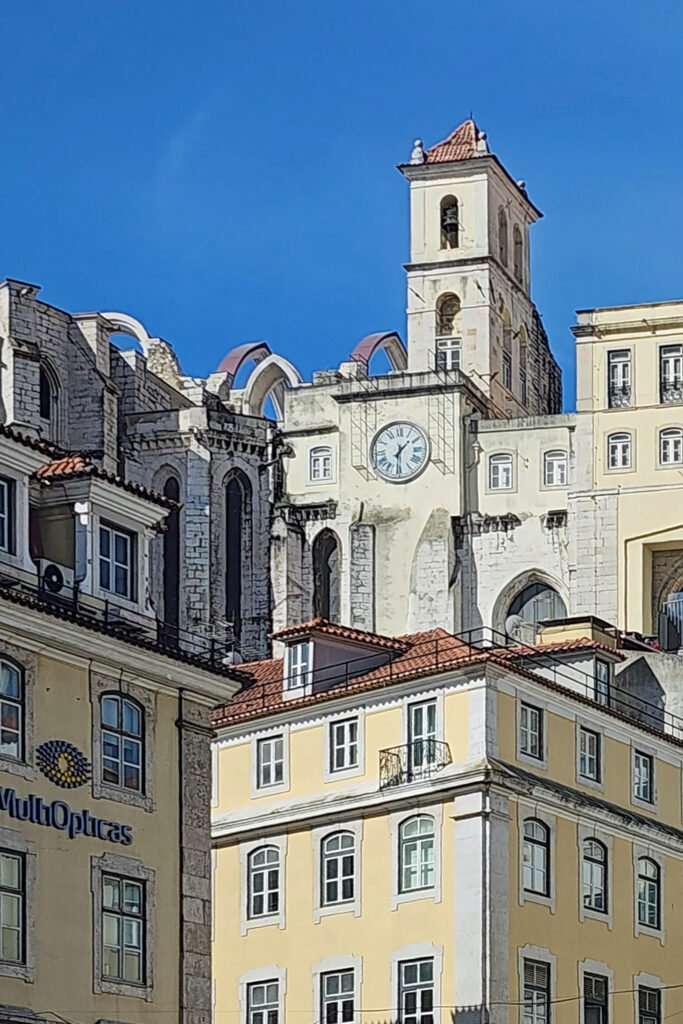by Alan K. Lee

Introduction
The Algarve consists of the southern coastline of Portugal, from Cabo Sagres in the west to the Spanish border in the east. The international airport in Faro, the largest city in the Algarve, makes the area easily accessible from anywhere in Europe, and the sunny climate and gorgeous coastline combined with the relatively low cost of accommodations and meals make it a wildly popular destination for tourists from colder and wetter, and more expensive, regions of Europe like the U.K.
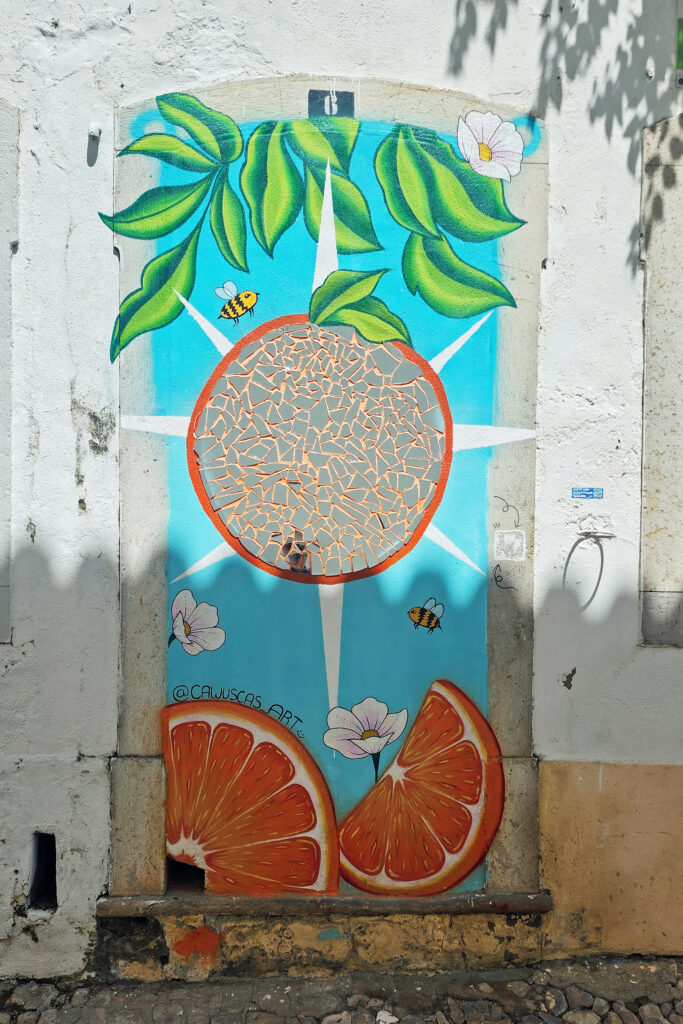
My wife and I had the pleasure of spending a couple of days in Faro on our trip to Portugal and Spain this past April (2024). We also booked a day tour to the spectacularly beautiful coastal area near Carvoeiro, roughly 40 miles west of Faro. Our time in Faro and the Algarve gave us only a taste of what the area is all about, but its appeal was obvious, even at first glance.
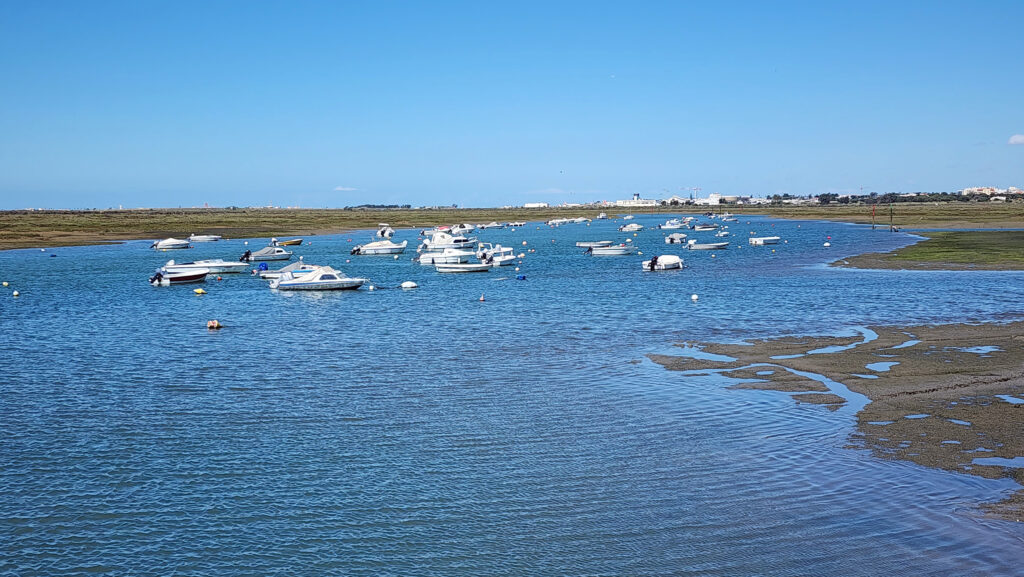
Faro
Faro is situated on the banks of the Rio Formosa Lagoon, which is protected from the open Atlantic by a series of barrier islands. The lagoon was named a National Nature Park in 1987 and recognized as one of the seven natural wonders of the country in 2010. The park encompasses 65 square miles (170 square kilometers) of salt marsh and islands. It is an important stopping place for migratory birds, and the barrier island beaches are popular recreational areas for locals and tourists.
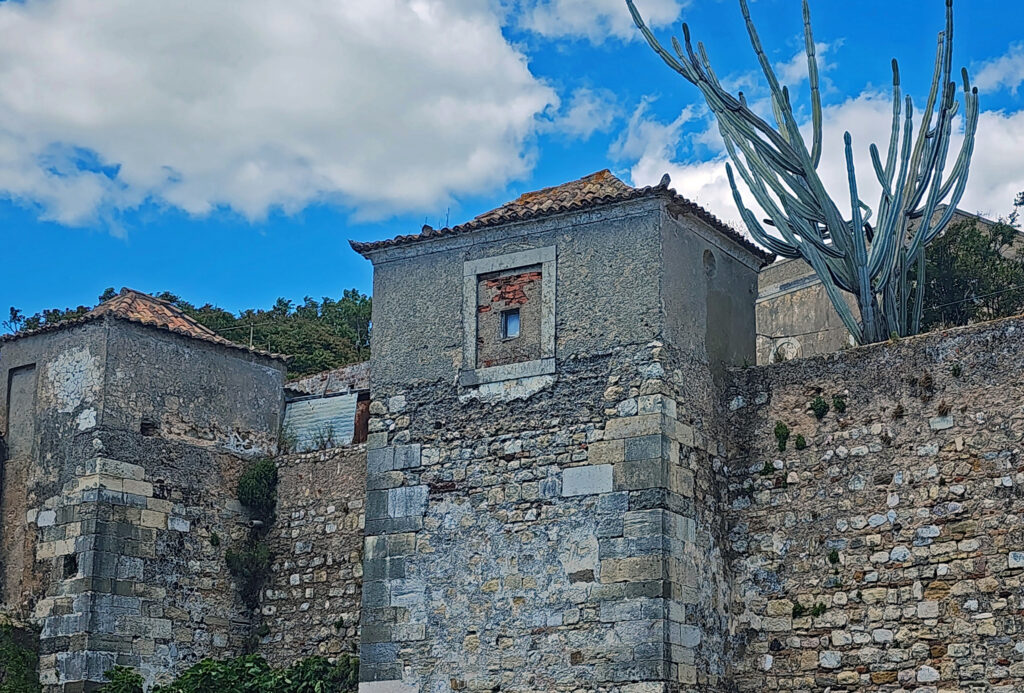
The Faro area has a long history and has been occupied since prehistoric times. The first recorded settlement dates to the 4th century BC when the Phoenicians established a town on the Rio Formosa Lagoon. The area has been controlled by the Phoenicians, Romans, Byzantines, Visigoths, and the Moors, who ruled the area for more than 500 years before Christian forces captured the area in 1249 during the Reconquista.
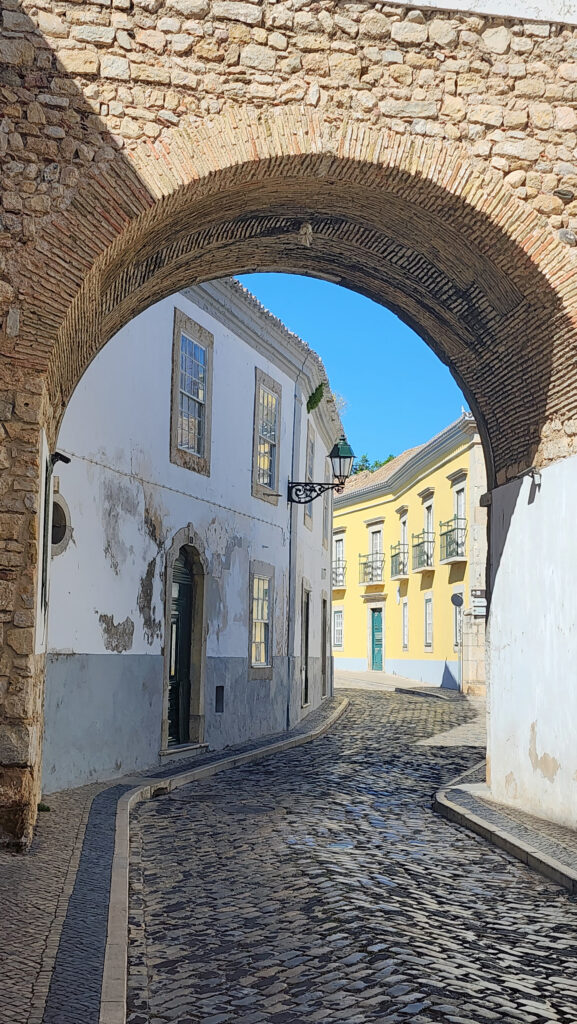
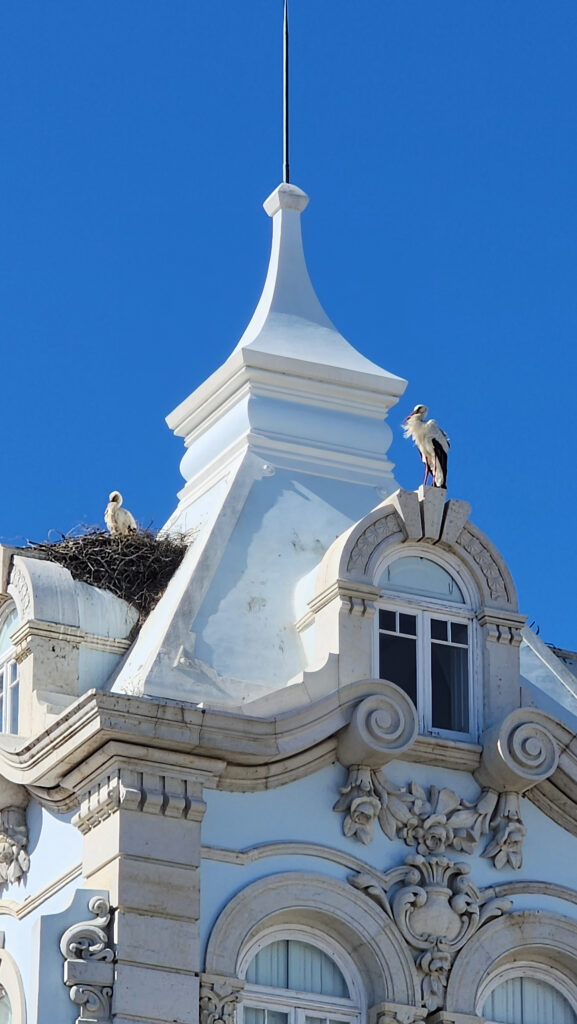
Faro has a charming old town with an interesting history, a small boat harbor, narrow cobblestone and tiled streets and alleys, restaurants and cafes seemingly on every corner, and beautiful churches and other buildings that predate anything to be found in our hometown, sometimes by many centuries.

We spent most of our time in Faro exploring the old town, sampling the local cuisine, enjoying the sunshine, and taking tons of photos. We did not visit any of the barrier island beaches, but the host of our B&B went out of her way to tell us about them and give us information about the ferry and tour boat operations that will take you there, an indication of how much the locals value the beaches. While Faro may not be a prime tourist destination, other than as a gateway to the Algarve, and gets short shrift in most guidebooks (Rick Steves’ Portugal makes no mention of Faro at all, for example), we found it to be a charming and worthwhile stop on our trip. For more information about Faro, click here.
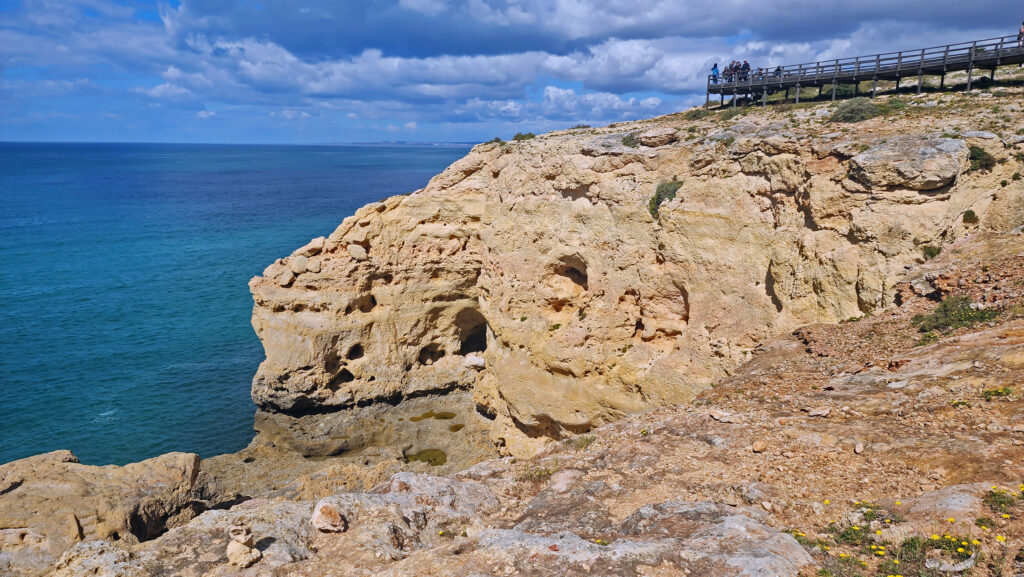
The Algarve Coast
The first stop on our day tour of the Algarve was Algar Seco, just east of the small town of Carvoeiro. A wooden boardwalk runs along the top of the cliffs there, with amazing 180⁰ views east and west along the coast.
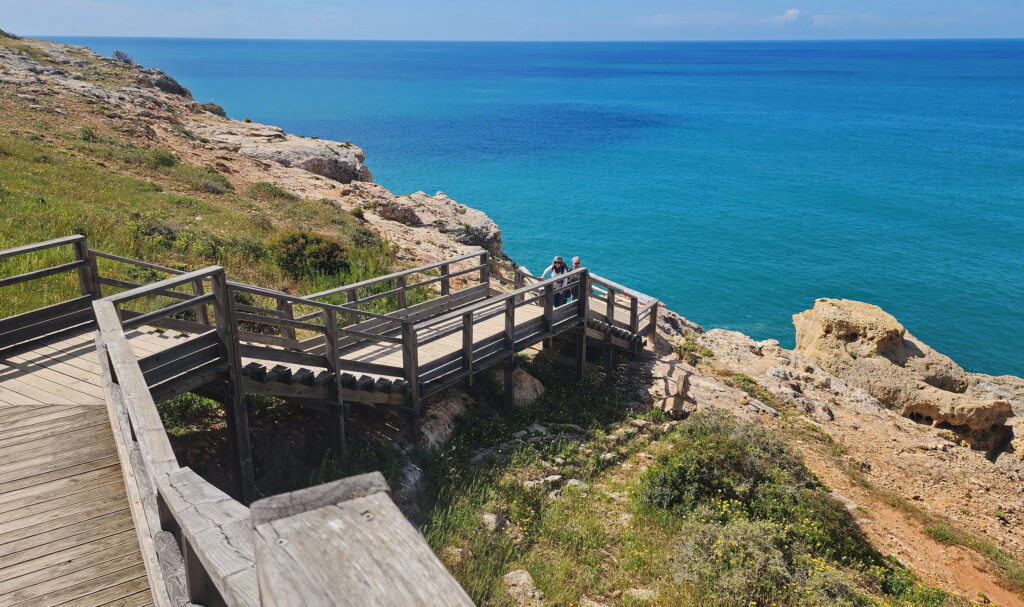
Stairs lead down from the boardwalk and into the limestone rock formations. The limestone cliffs rise directly from the ocean, with natural pools and blowholes along the water’s edge. Sea caves dot the area, and there are numerous dry caves higher up in the cliffs. Fossils of clams and other marine creatures can be found throughout the limestone layers.
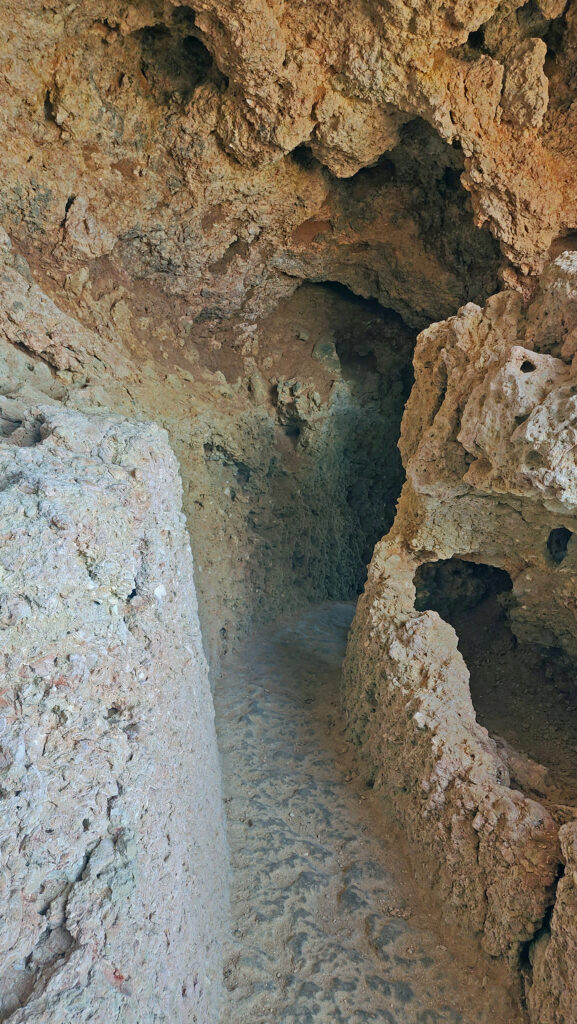
Paths and tunnels that have been cut through the soft rock give easy access to the whole area. We had a great time exploring the cliffs and caves and just taking in the incredible views of the cliffs and ocean. Algar Seco is just an incredibly scenic place, well worth the hour-long van ride from Faro.
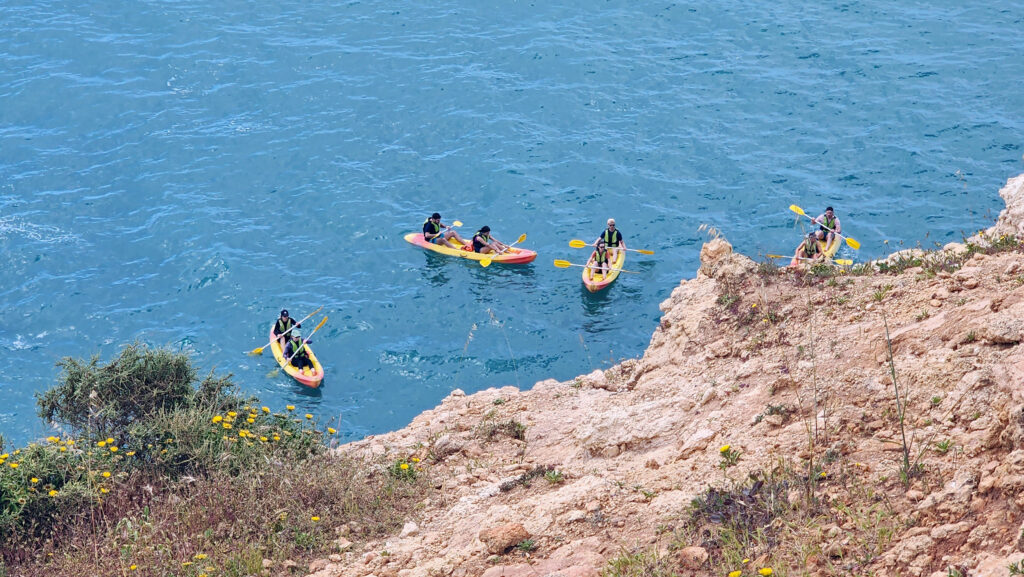
Our second stop was the Benagil area, a few miles east of Algar Seco. Photos of Benagil Cave were what drew my wife and I to the Algarve in the first place. We had dreams of kayaking or motoring into the cave that has a nice sandy beach, several openings to the sea, and a collapsed section of the roof giving views of the sky above. But so did hordes of tourists before us. So many, in fact, that overcrowding has led to regulations prohibiting all watercraft from entering the cave, making a boat tour less appealing.
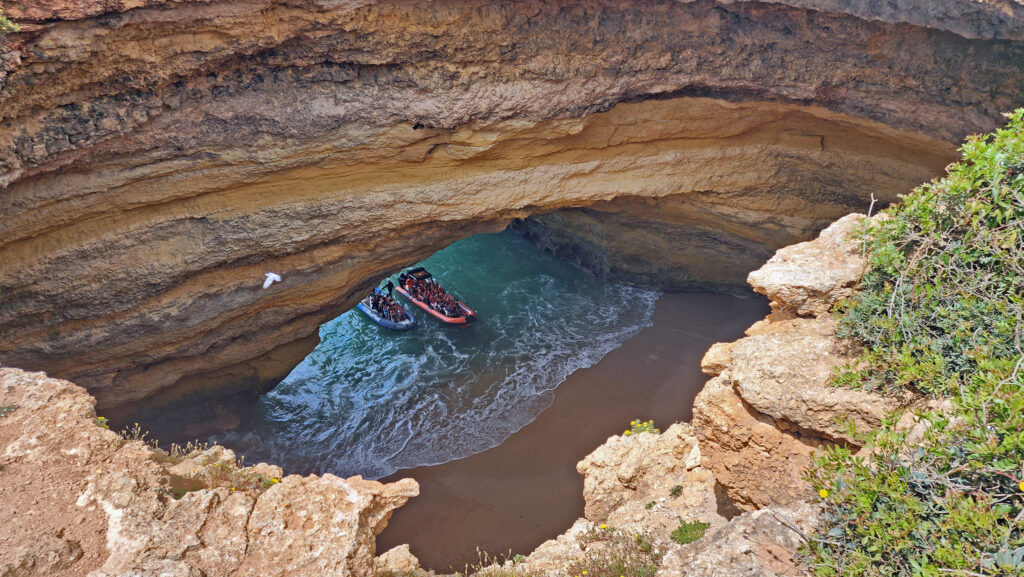
And from above, you can barely see into the cave through the collapsed roof, unless you climb over the wooden barrier or go around it and climb along the edge of the opening, which many people (my wife and I included) do even though it is not safe.
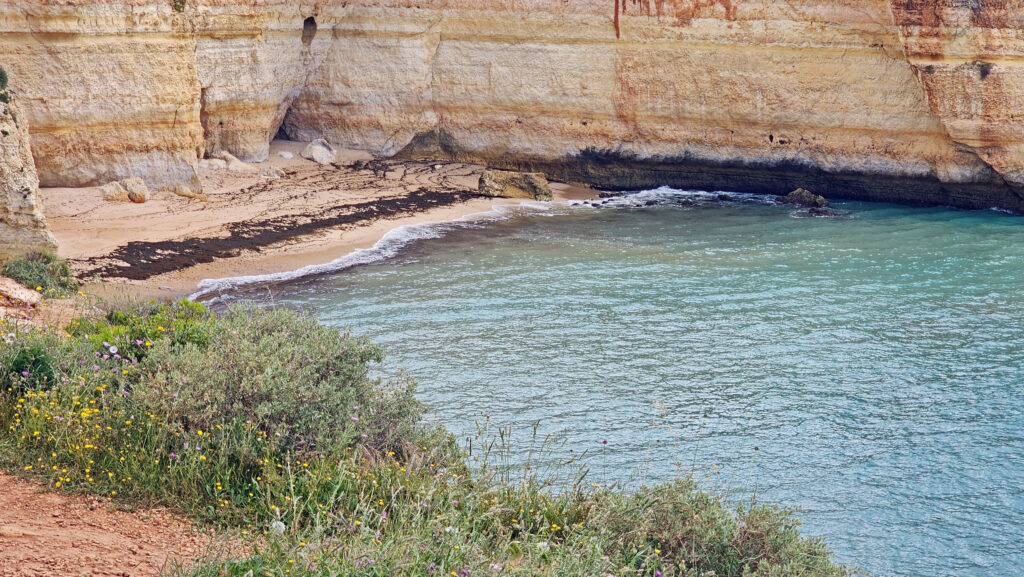
The coastline there is plenty scenic, but we could have skipped Benagil, in my opinion. (But kayaking the coastline, even if you can’t access Benagil Cave, would be awesome).

Our final stop came at Marinha Beach, about a mile east of Benagil Cave. A trail leads from the parking area down to the beach, and there is a network of trails leading along the top of the cliffs to the west of the beach. Offshore sea stacks and several natural arches make this one of the most scenic shorelines you’ll find anywhere in the world.

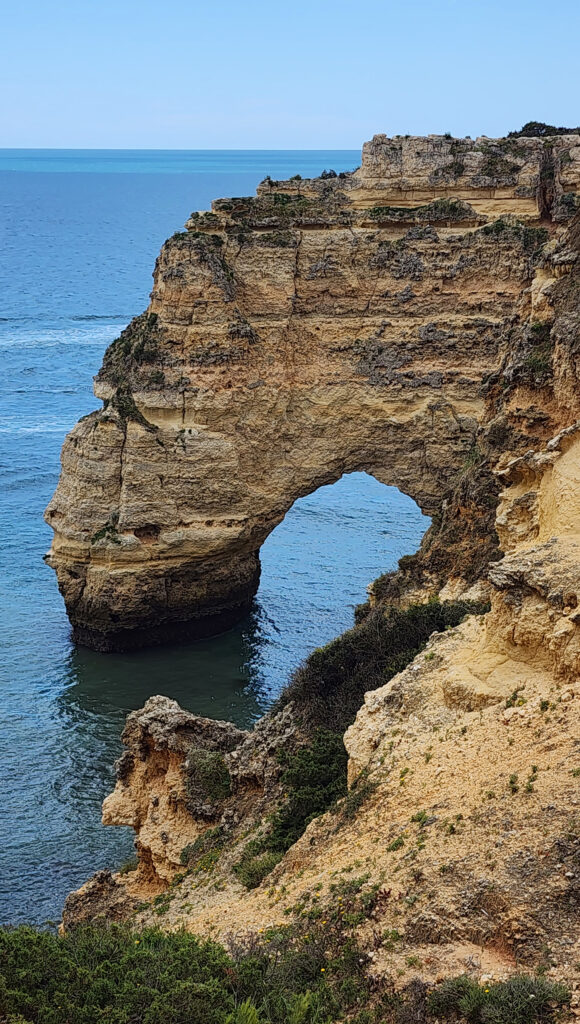
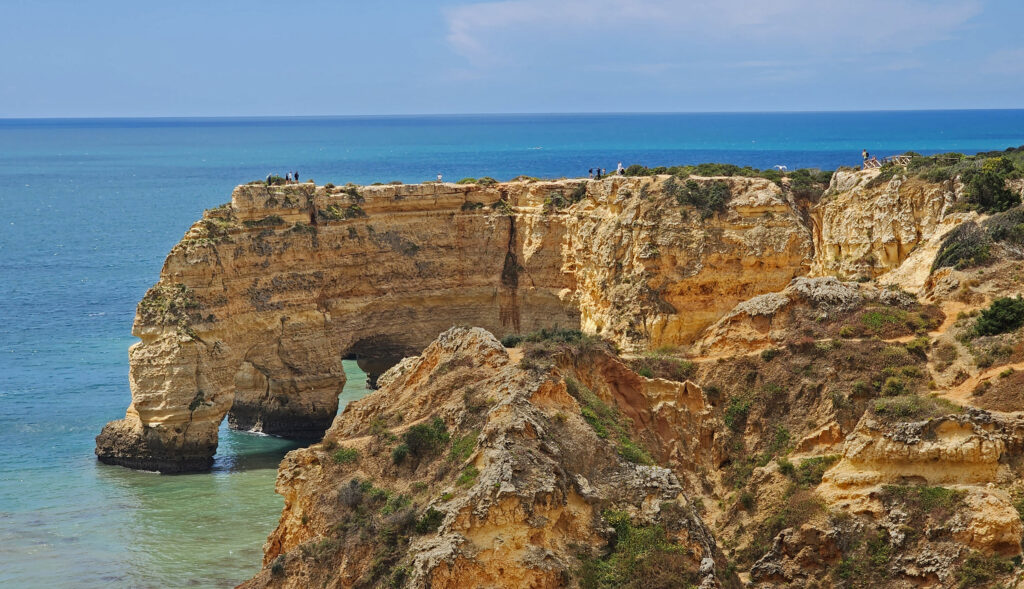
We had a couple of hours at Marinha to enjoy the beach and explore the cliffs on our own before we had to meet back up with the tour group and head back to Faro. I think we could have easily spent the whole day there. Algar Seco is fantastic and should be on your itinerary if you visit the Algarve, but in my opinion, Marinha Beach and the cliffs of the Arcos Naturais (Natural Arches) are even better, without a doubt one of the highlights of our visit to Portugal.
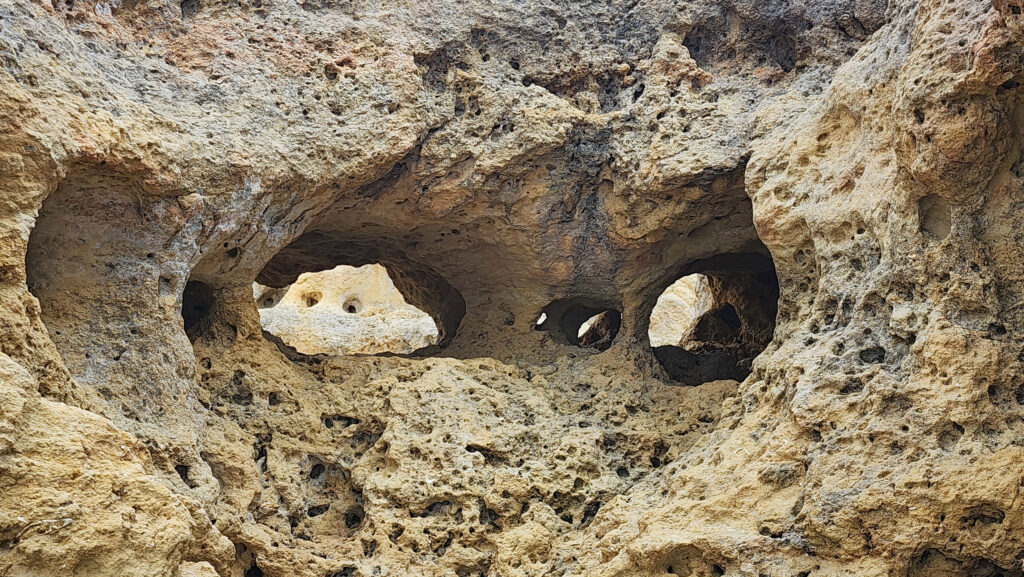
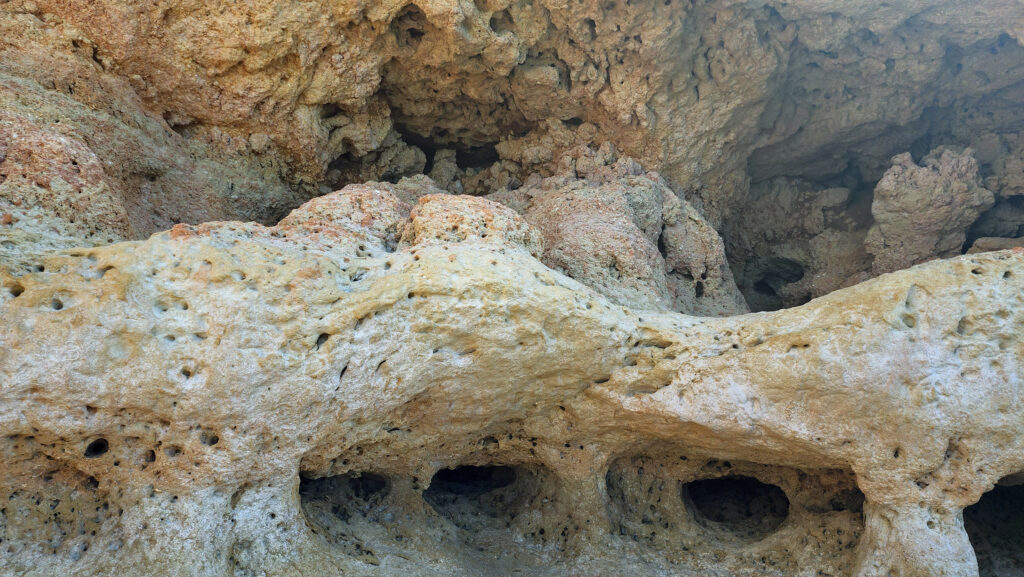
Conclusion
Faro is an interesting city and a worthwhile stop, but if you have more time to explore the Algarve than we had, I suggest that you follow Rick Steves’ lead and spend a few days in Lagos or Salema in the far west of the Algarve. After all, we thought the area around Carvoeiro that we toured was fantastic, but Steves labels that part of the coast “the worst” of the Algarve. Yes, it’s touristy, crowded, and the lack of access to Benagil Cave makes it overrated. But, if the west end is better than Algar Seco and Marinha Beach, it has to be well worth visiting. We may never make it back to Portugal (so many places to see, so little time), but we will definitely explore the Algarve more thoroughly if we ever return.
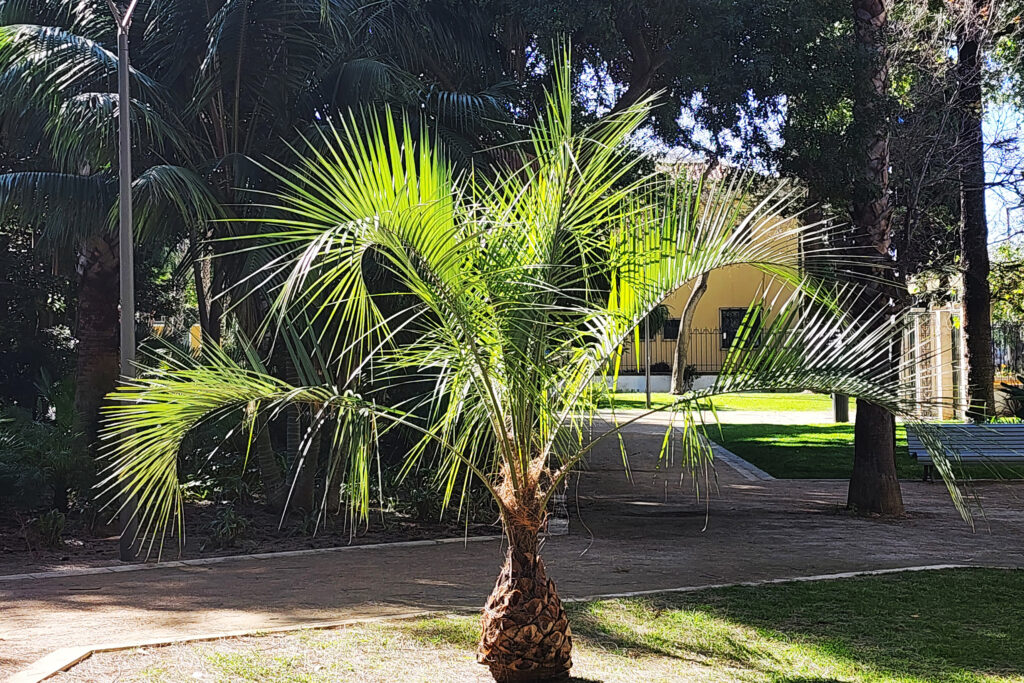
Faro and the Algarve coastline are great destinations, and Lisbon and the surrounding area are definitely bucket list destinations for anyone that can travel to Europe. For more on our trip to Portugal, see to my posts on Lisbon and Sintra.
Posted July 11, 2024
All photos © Alan K. Lee

